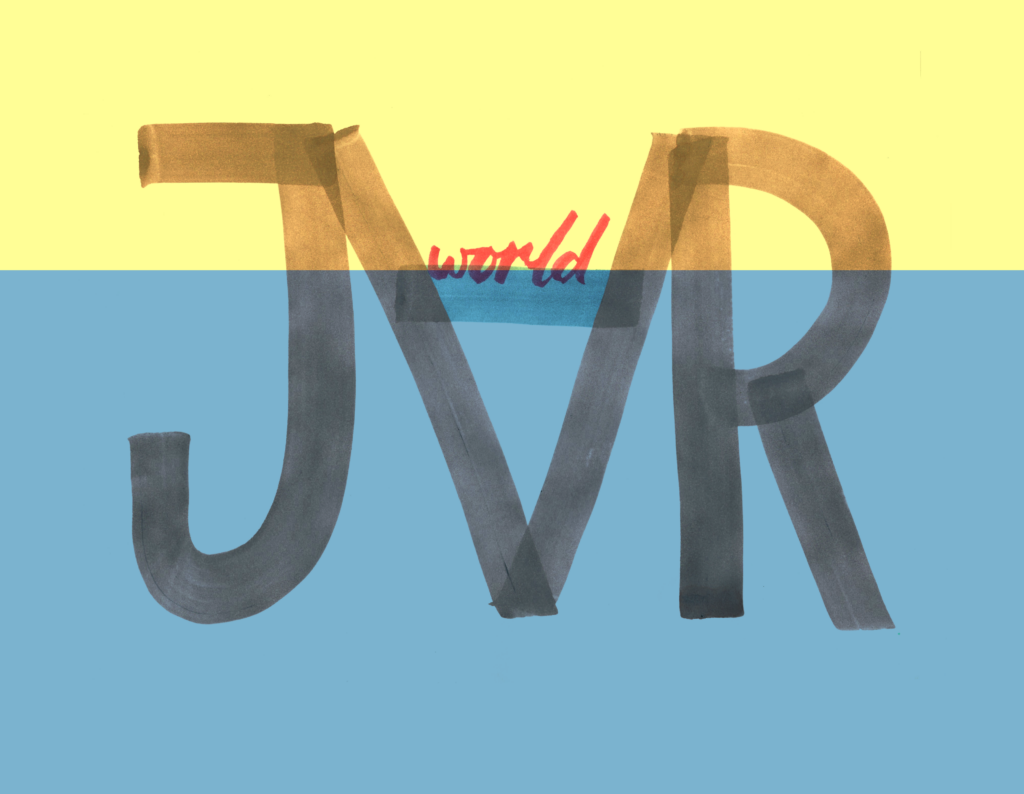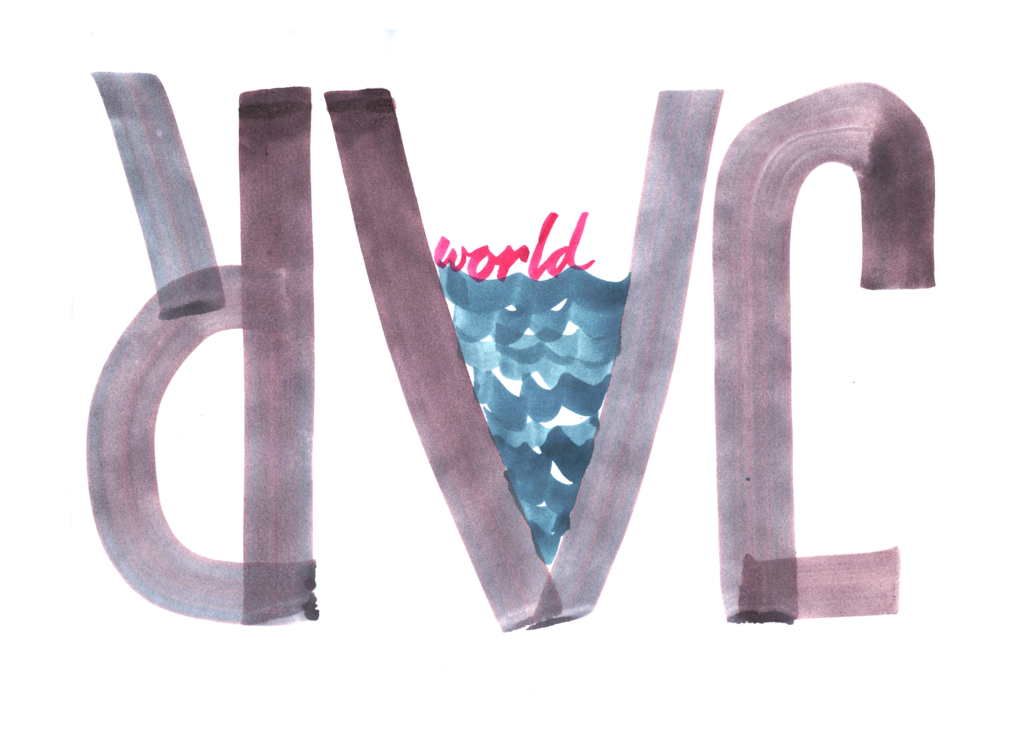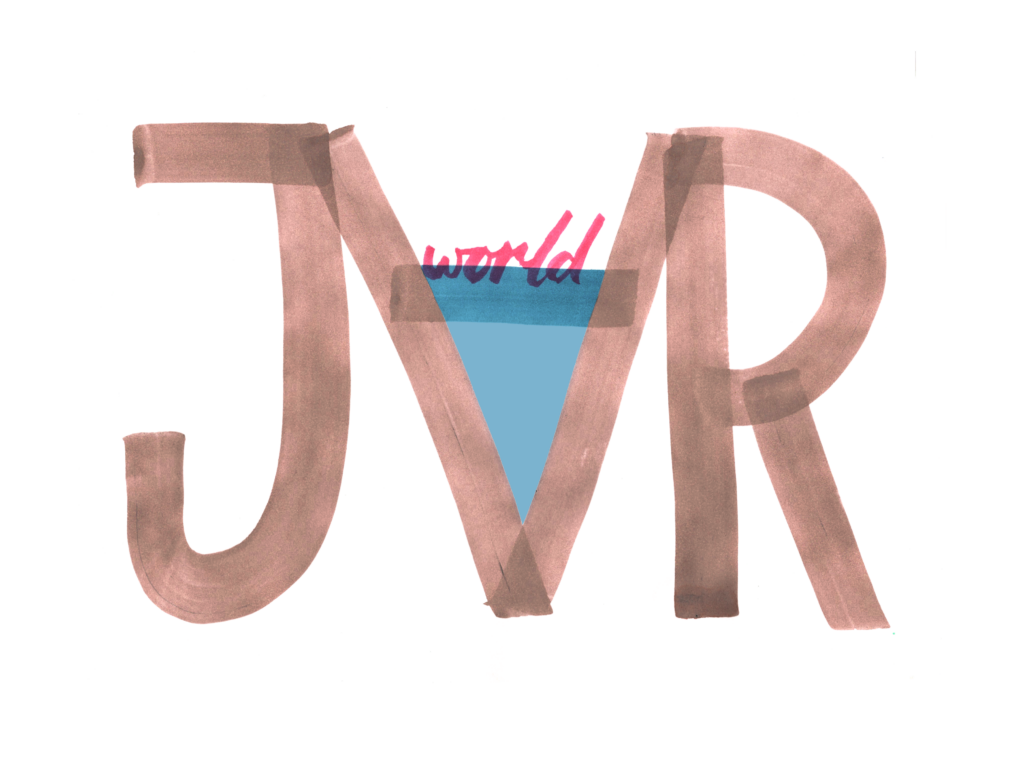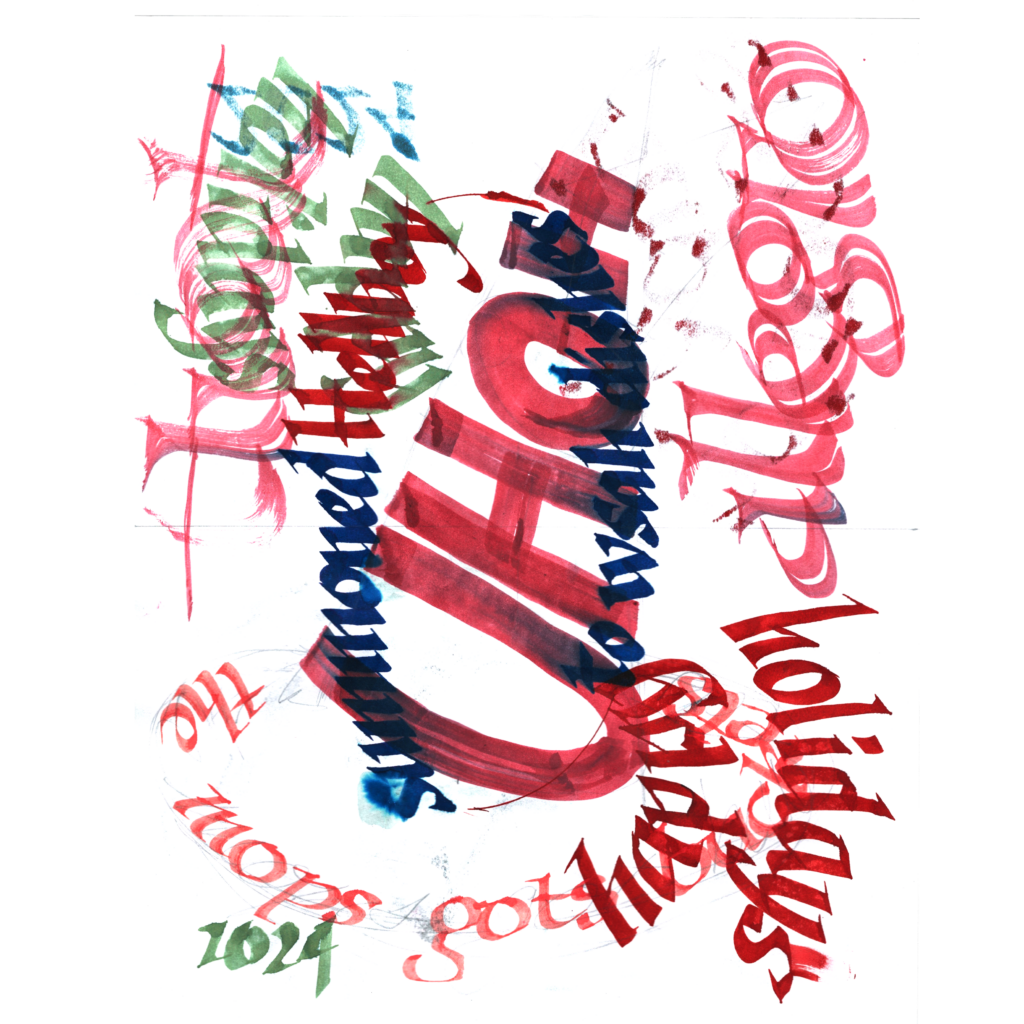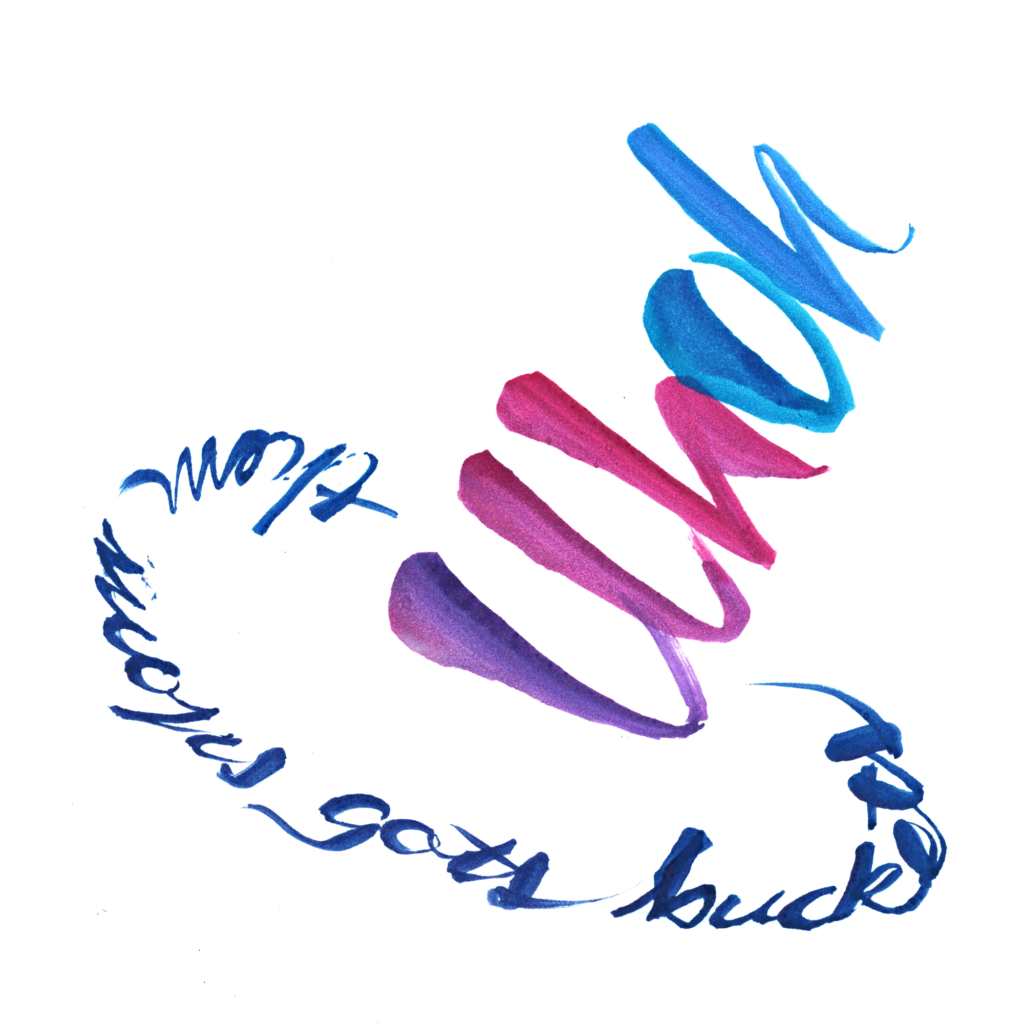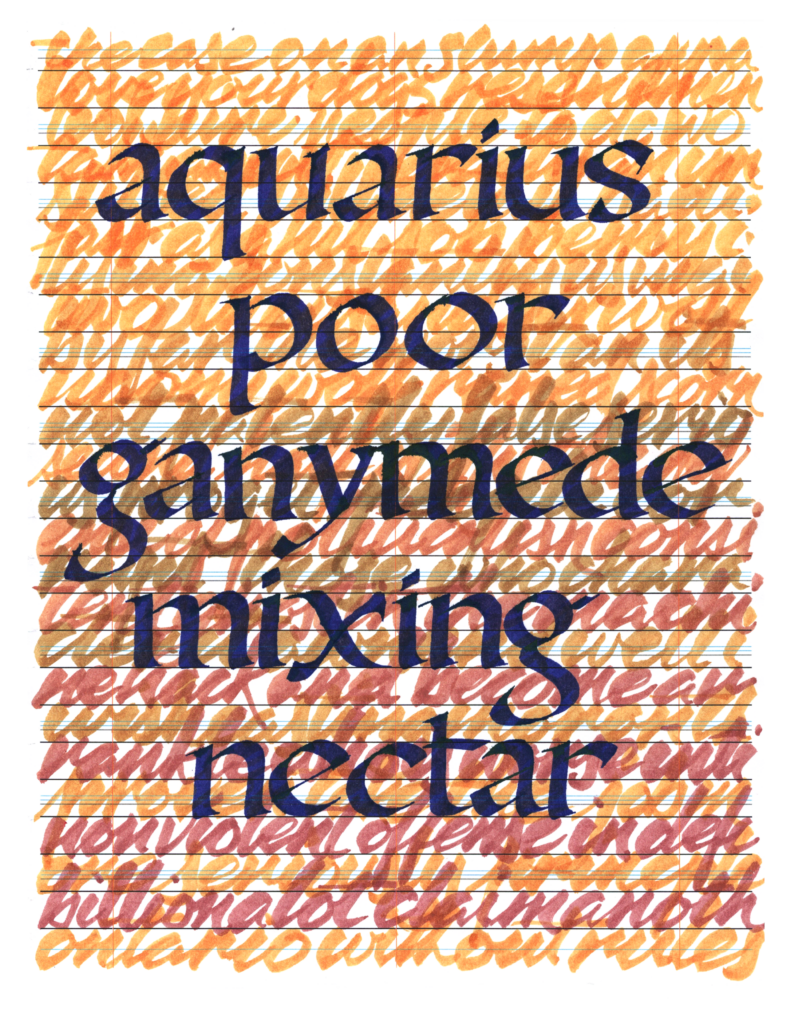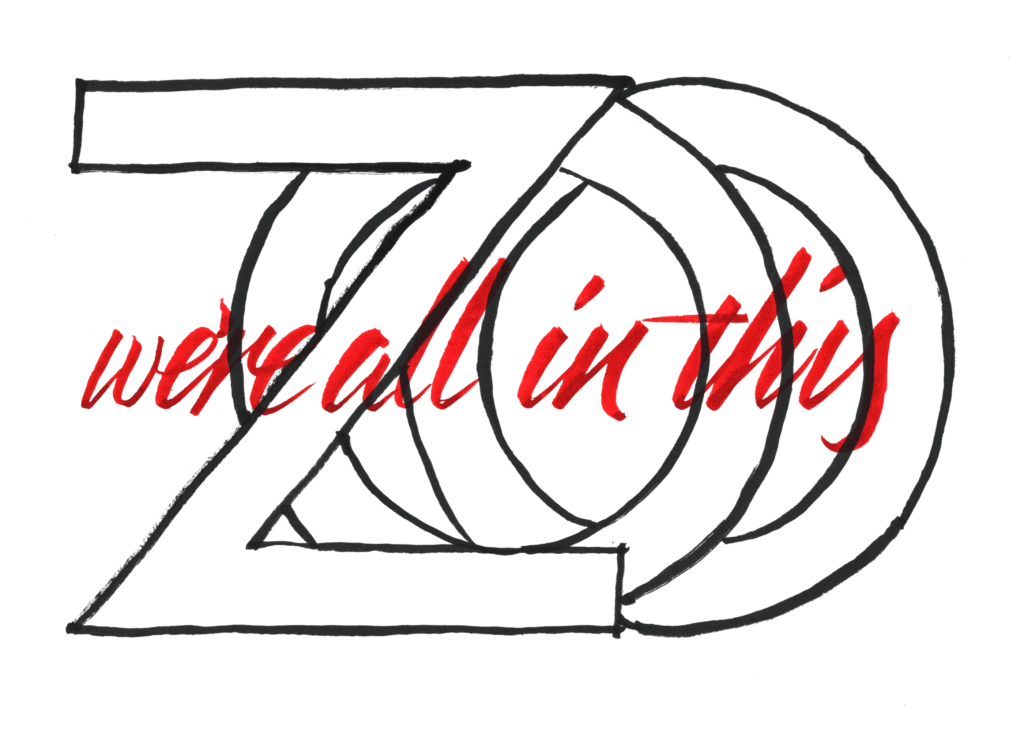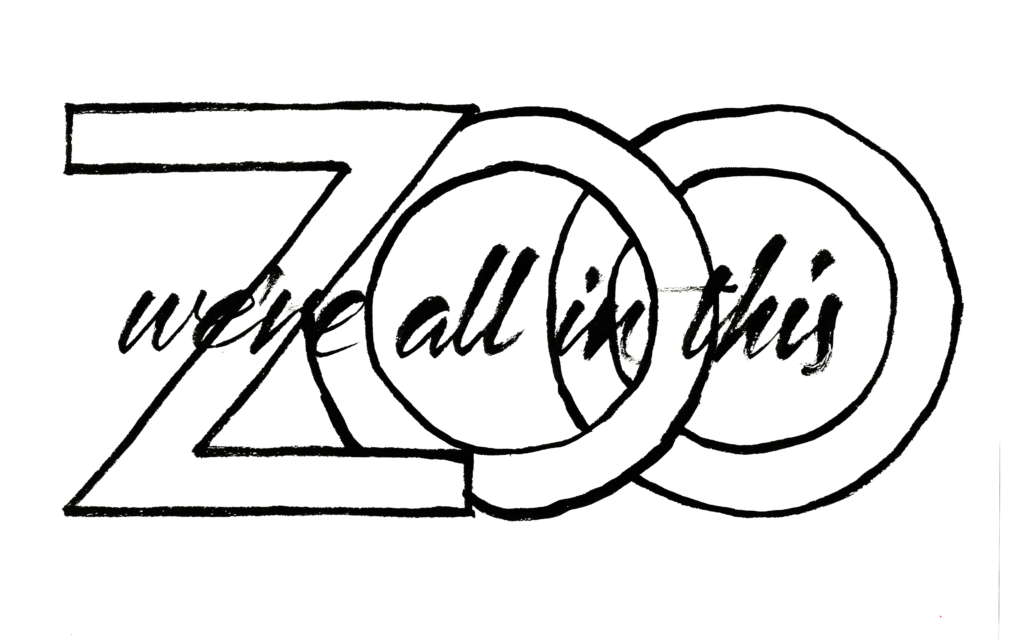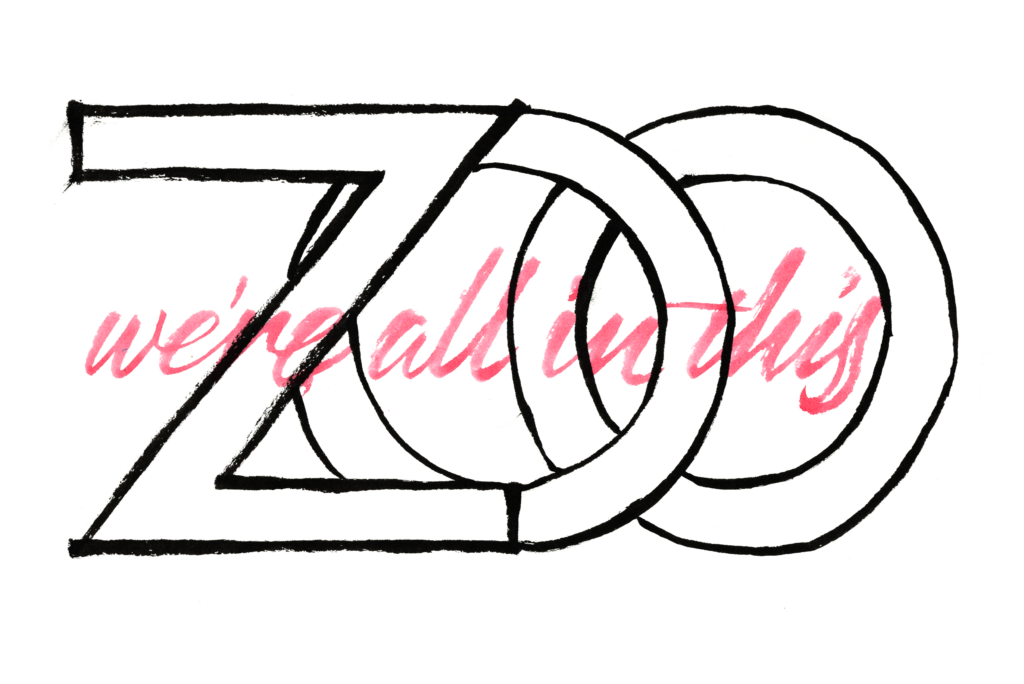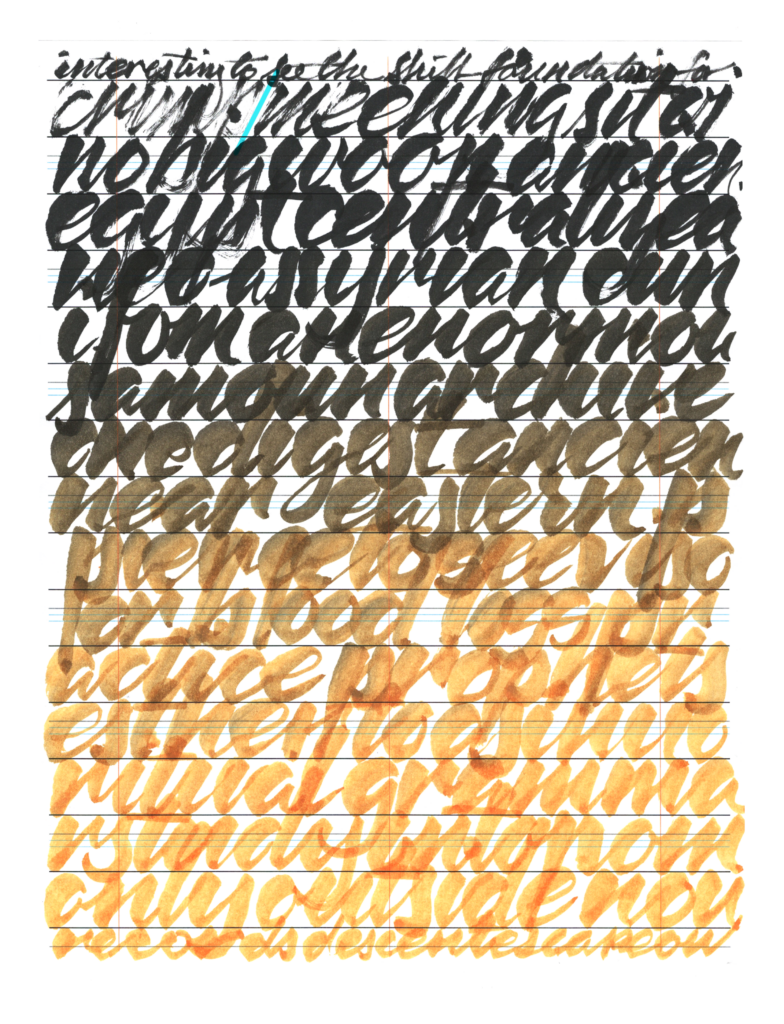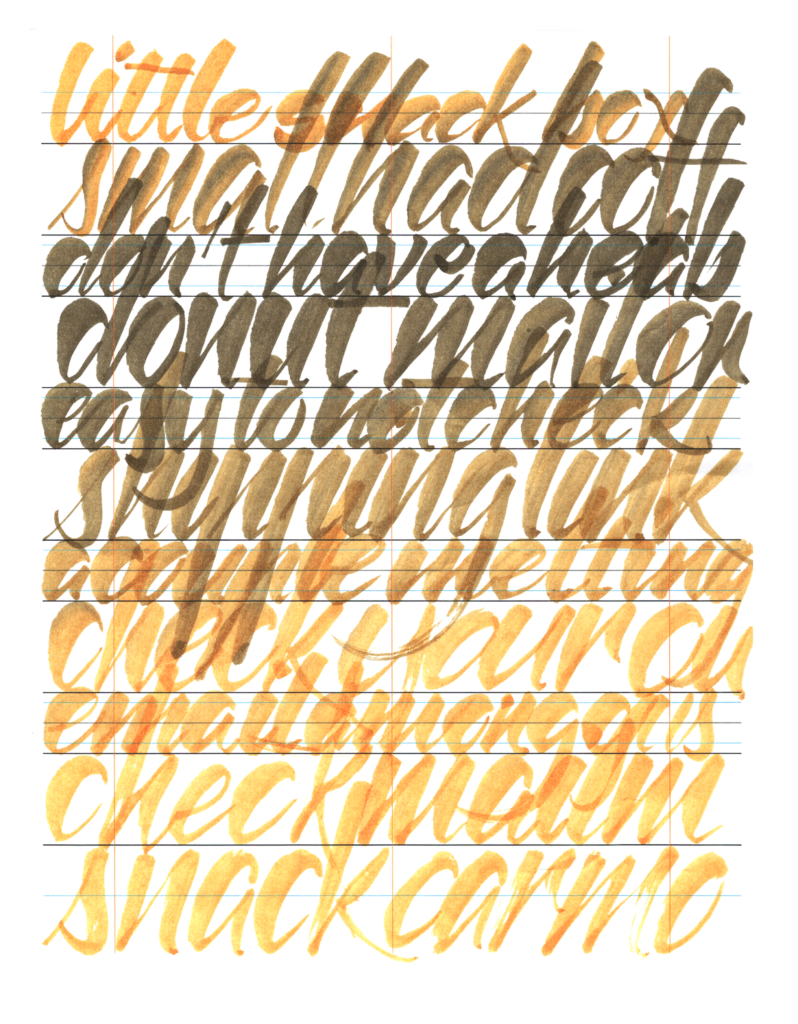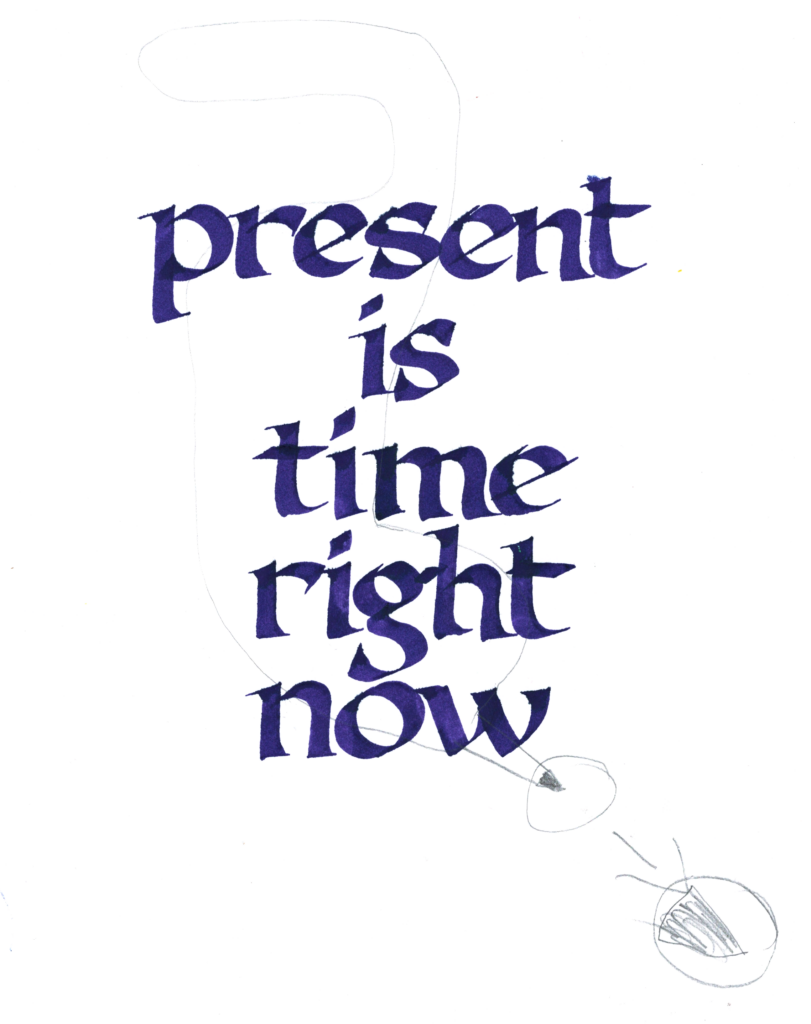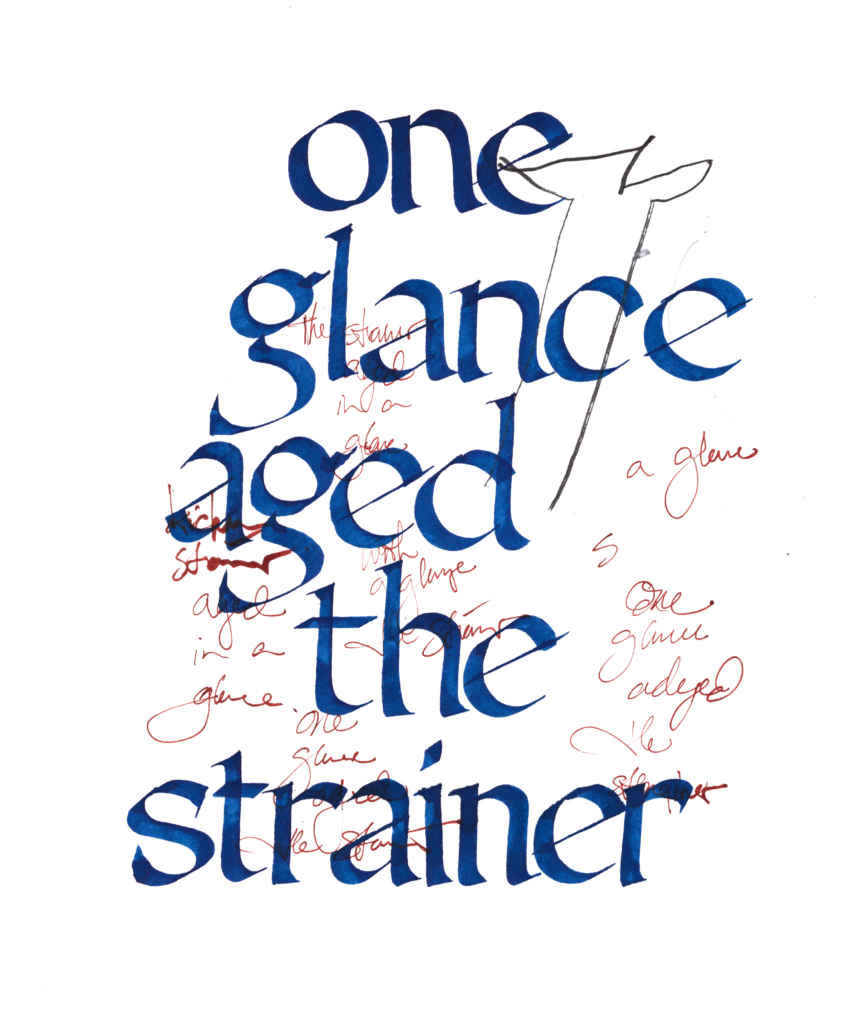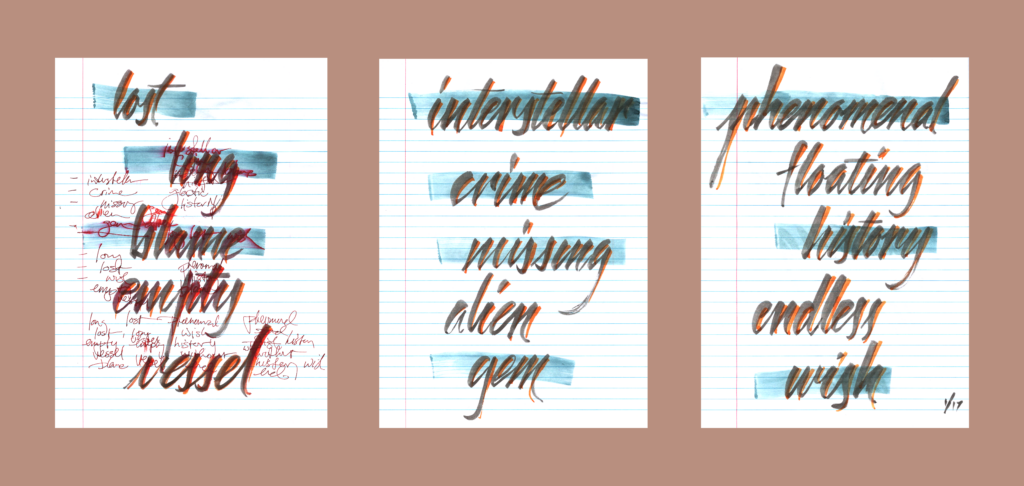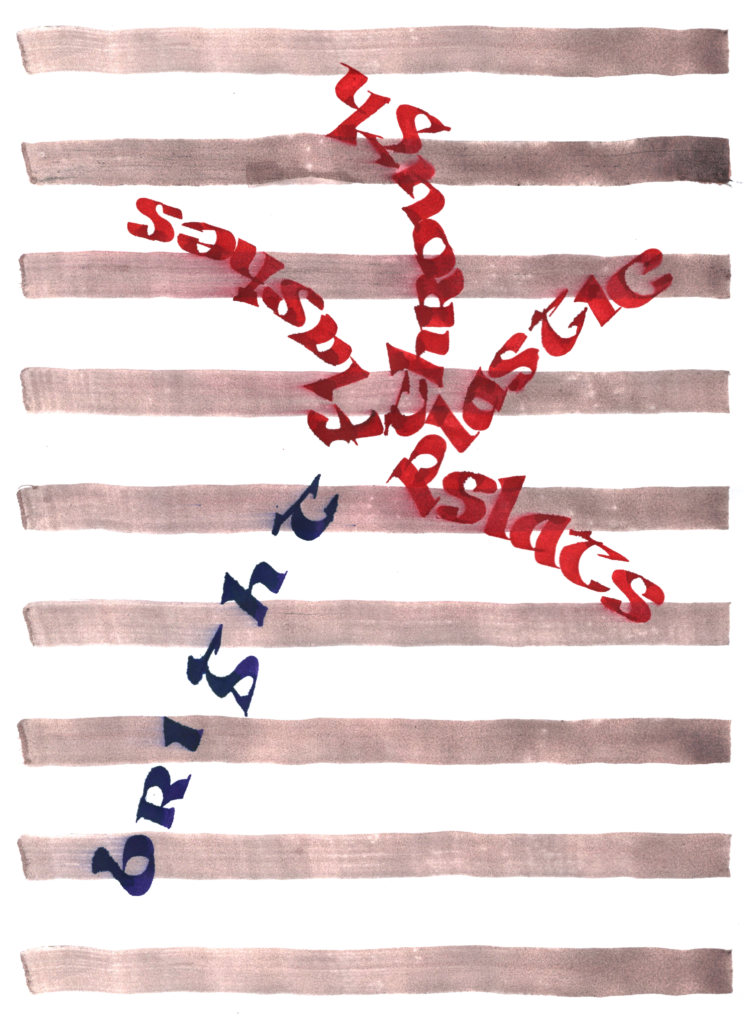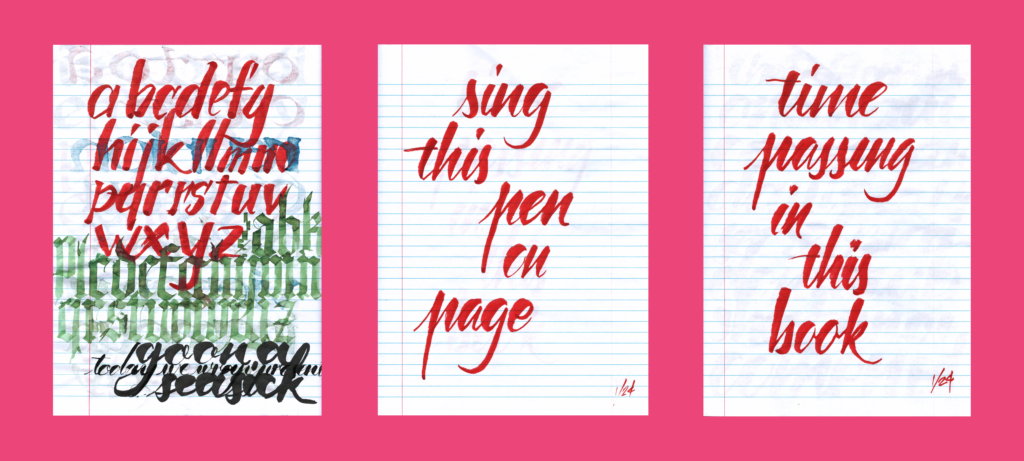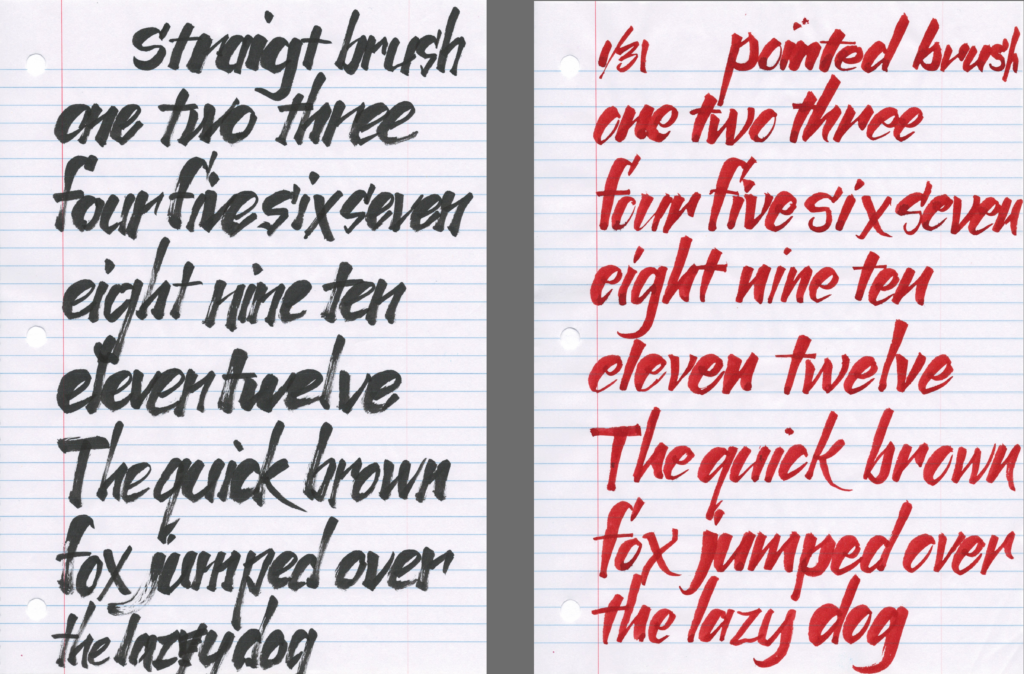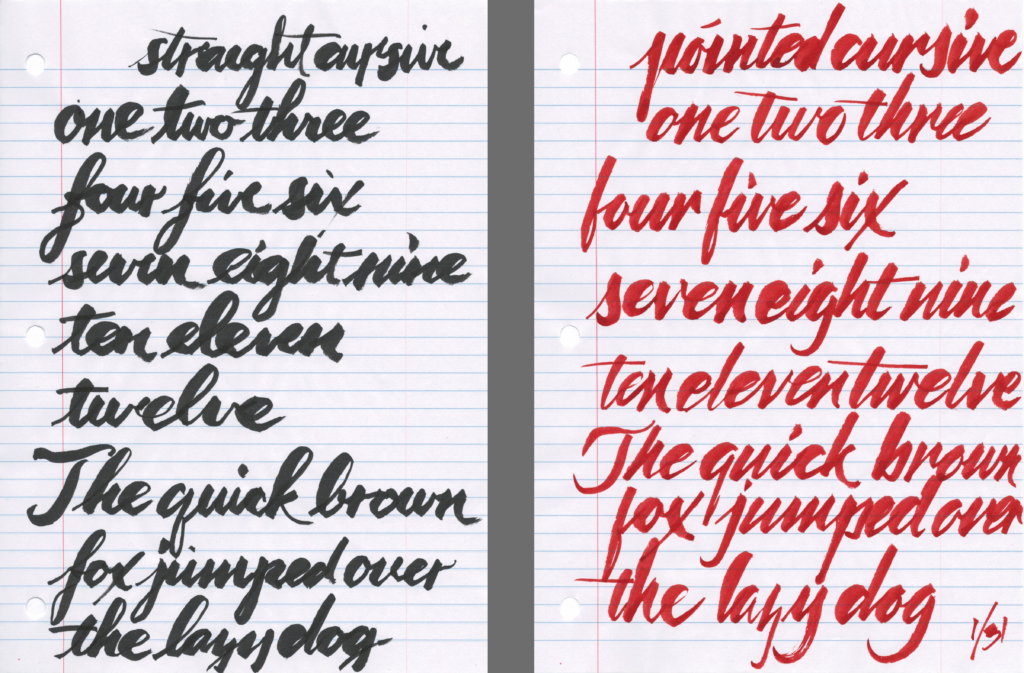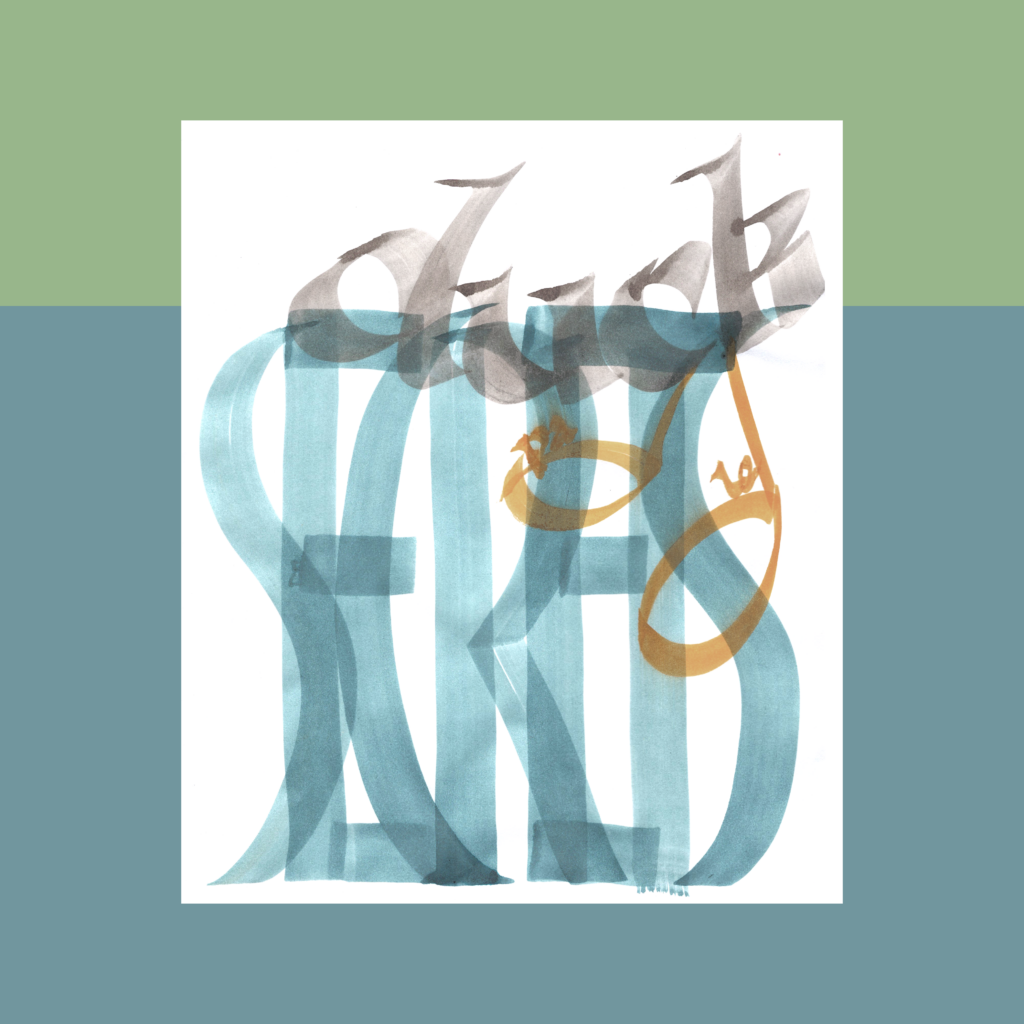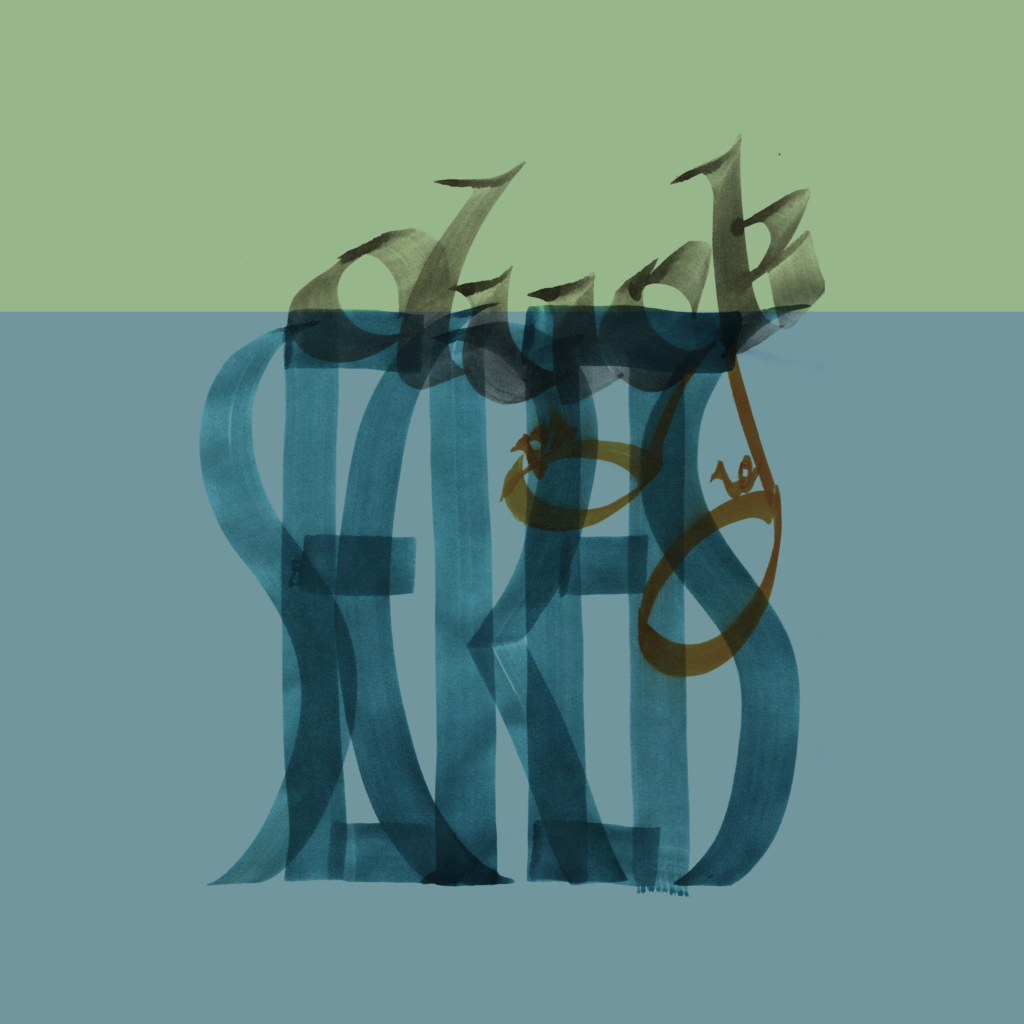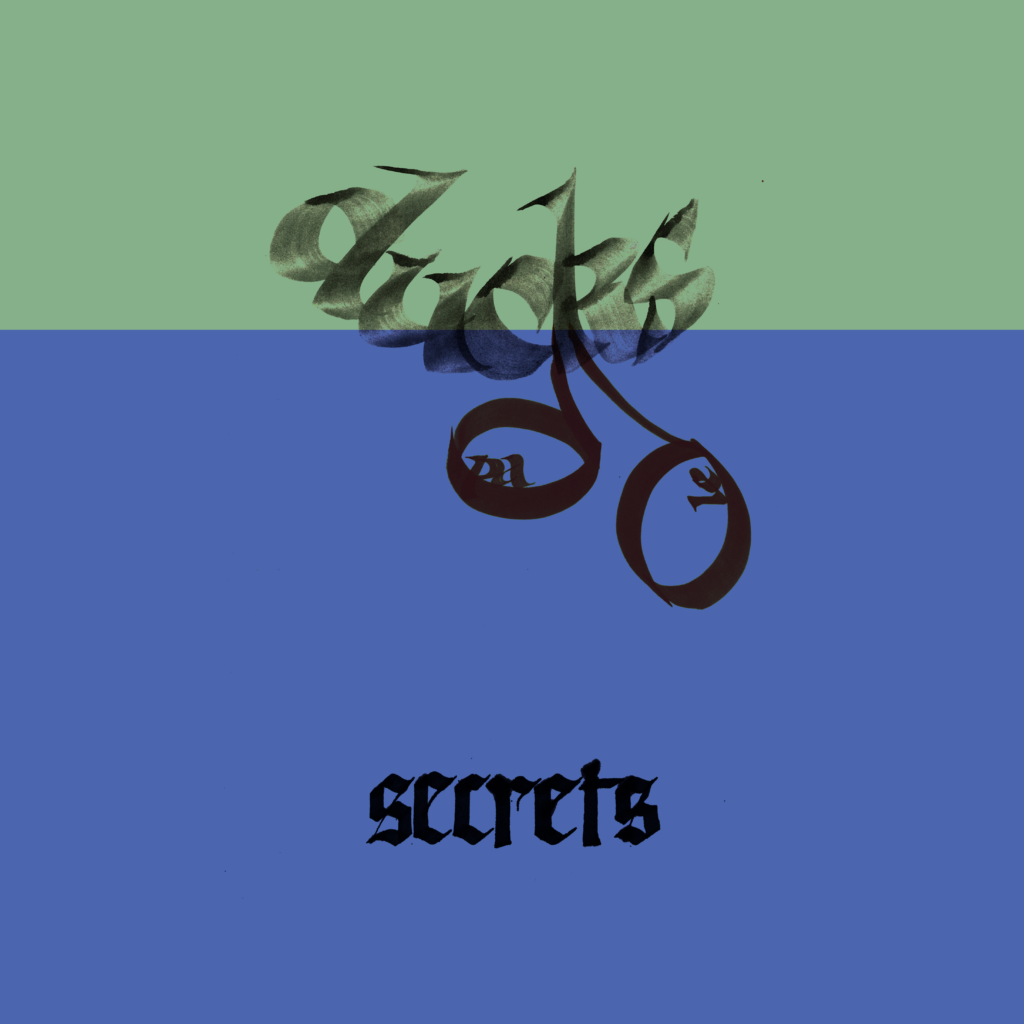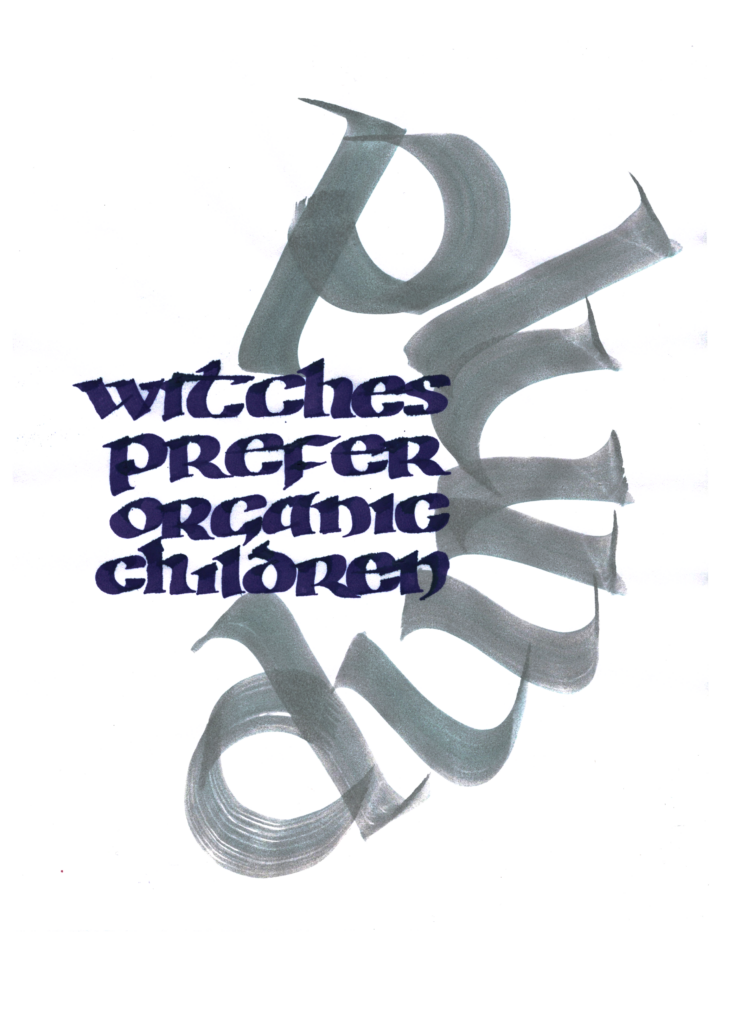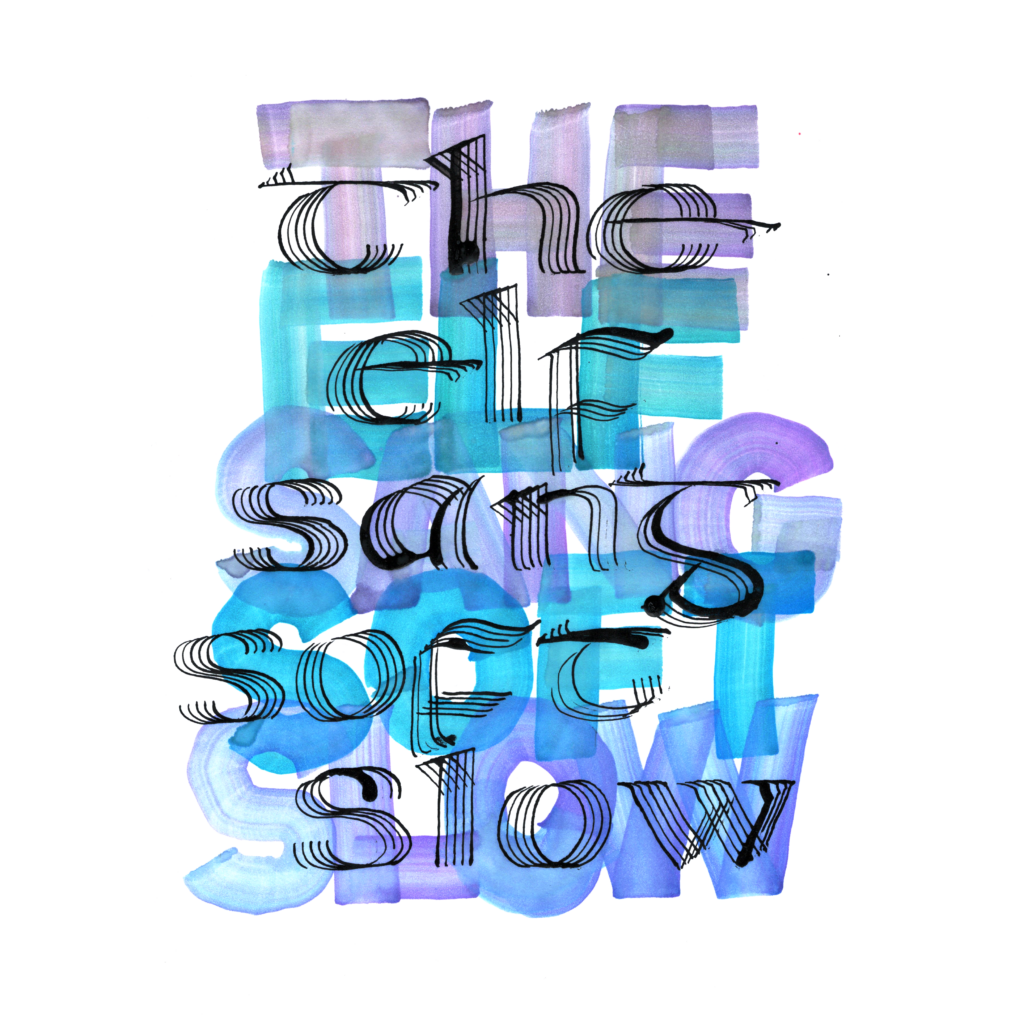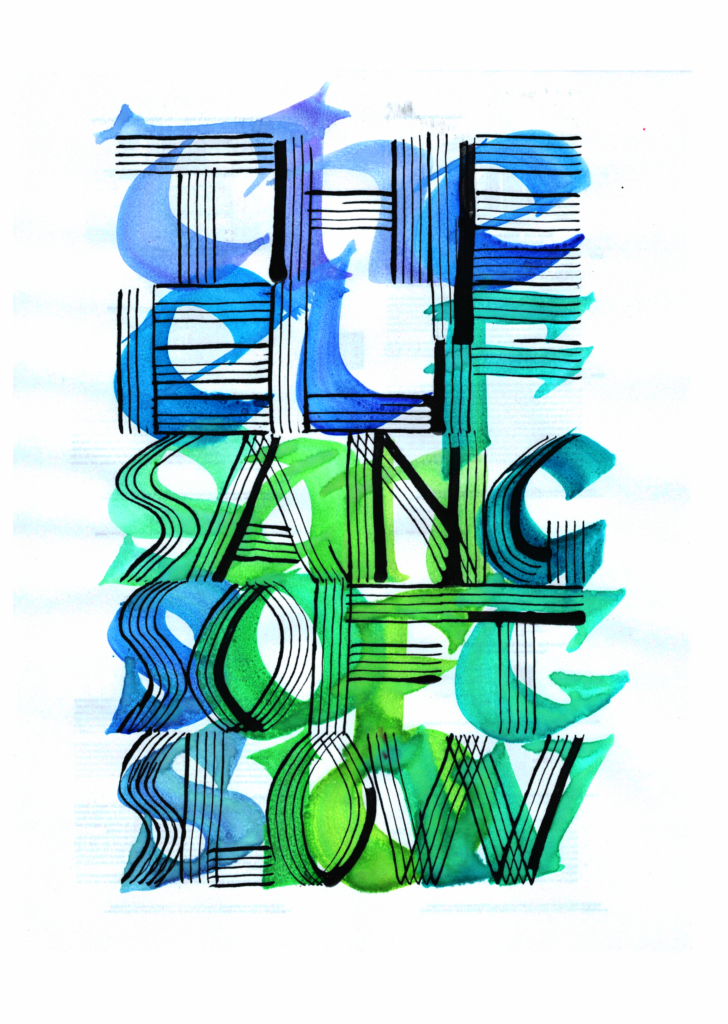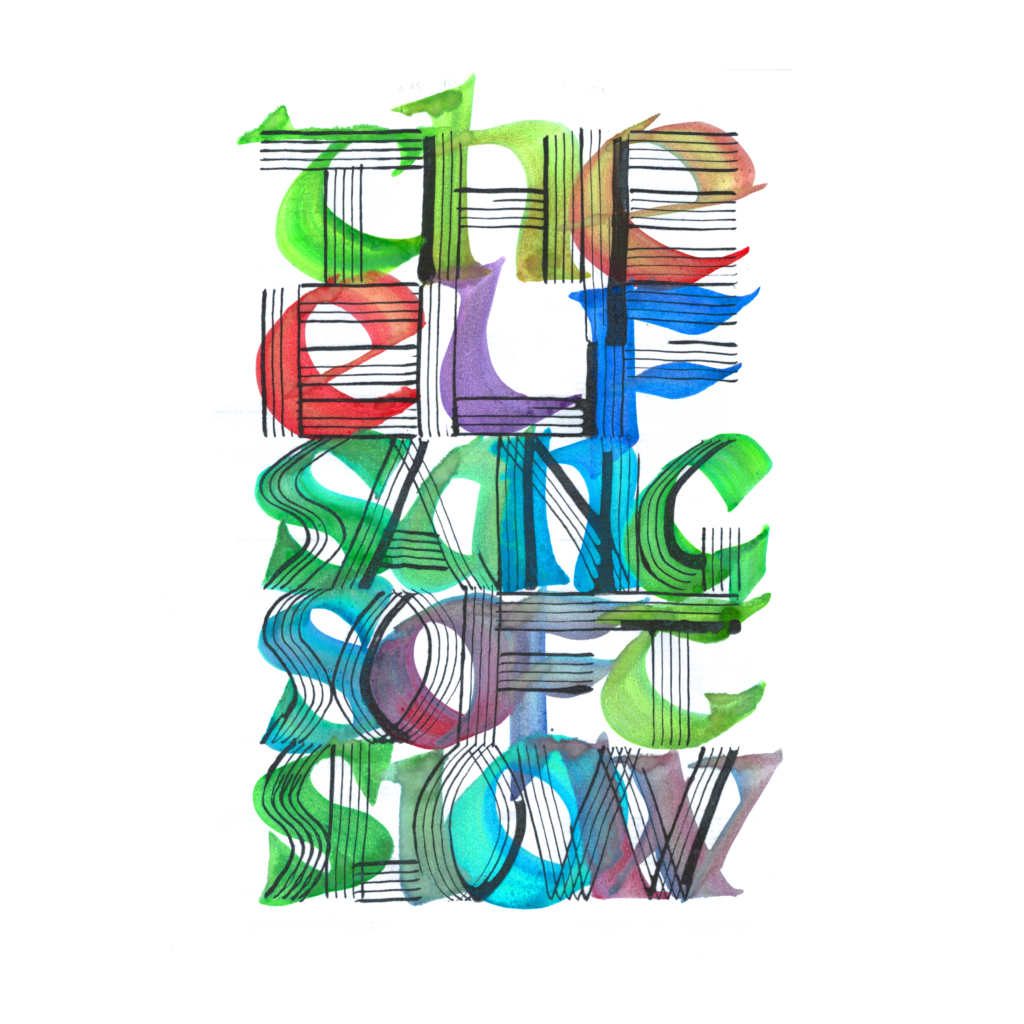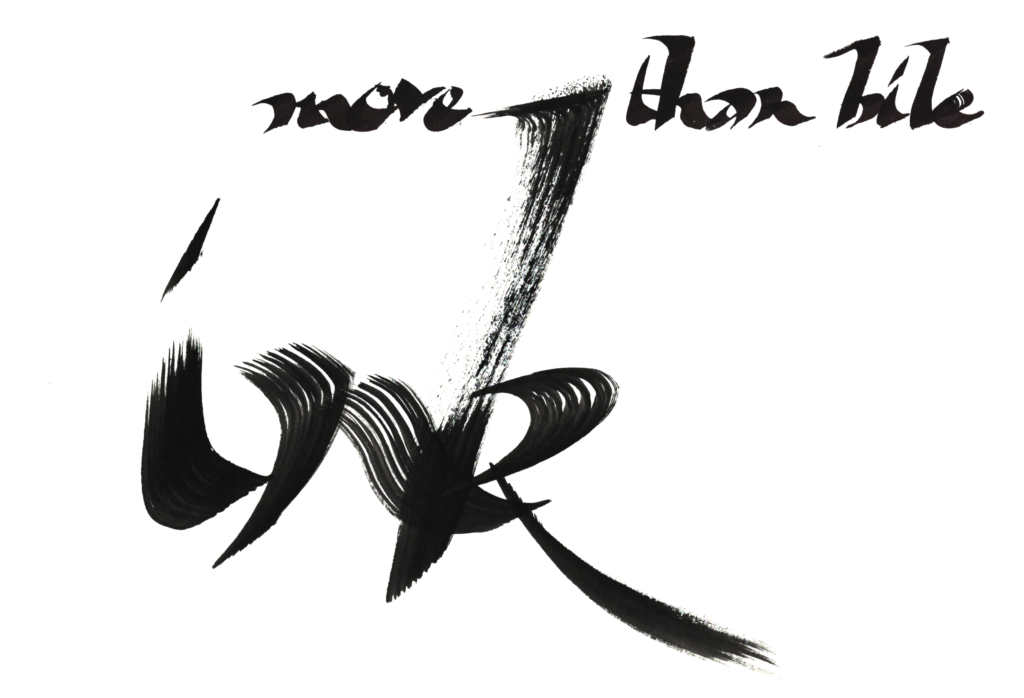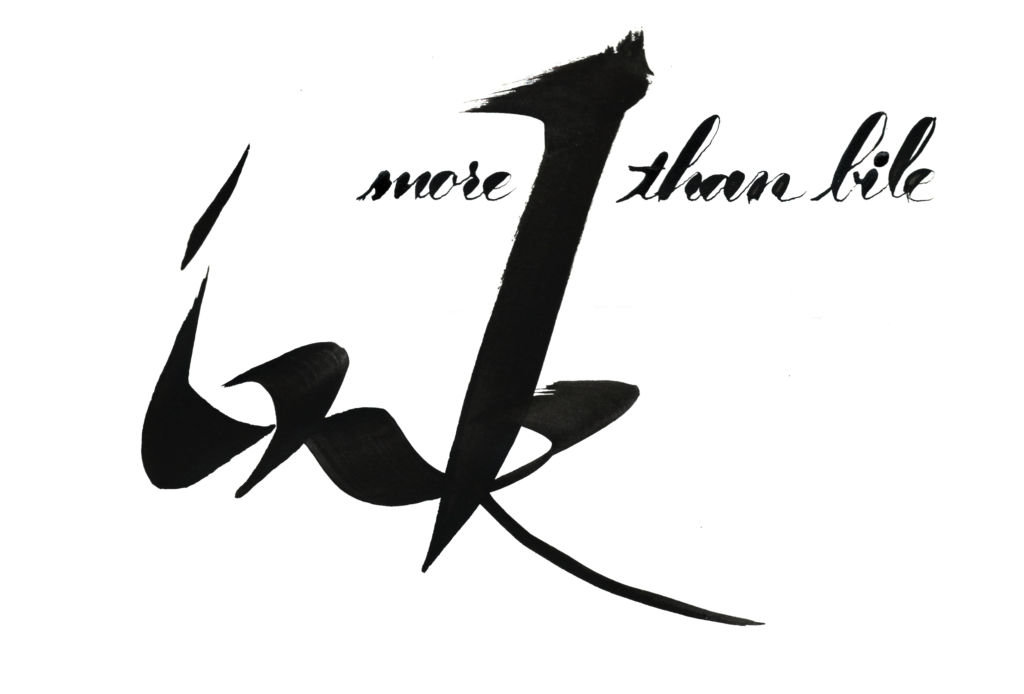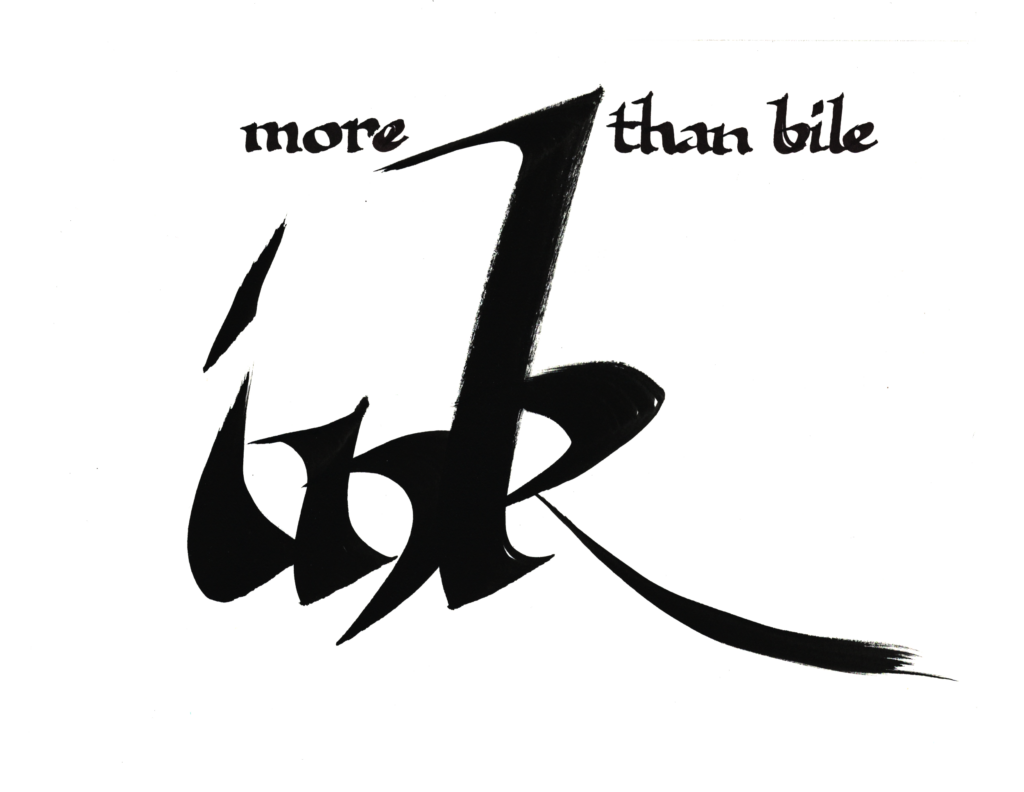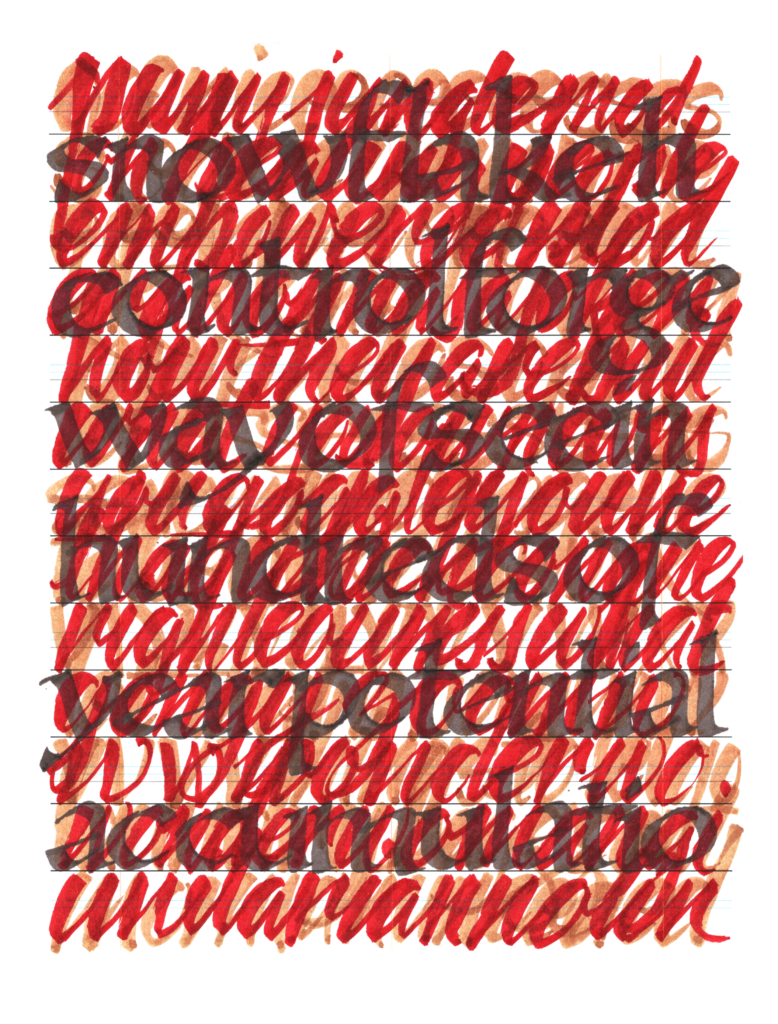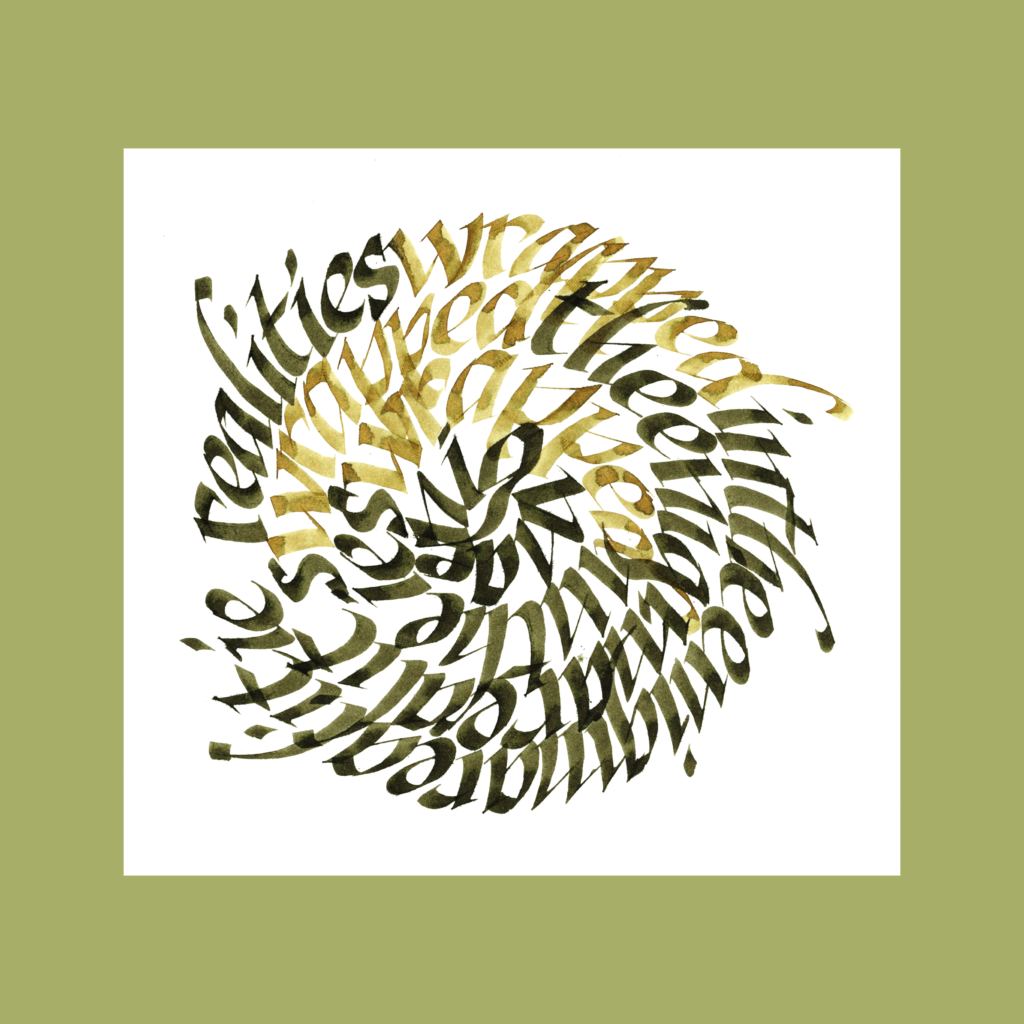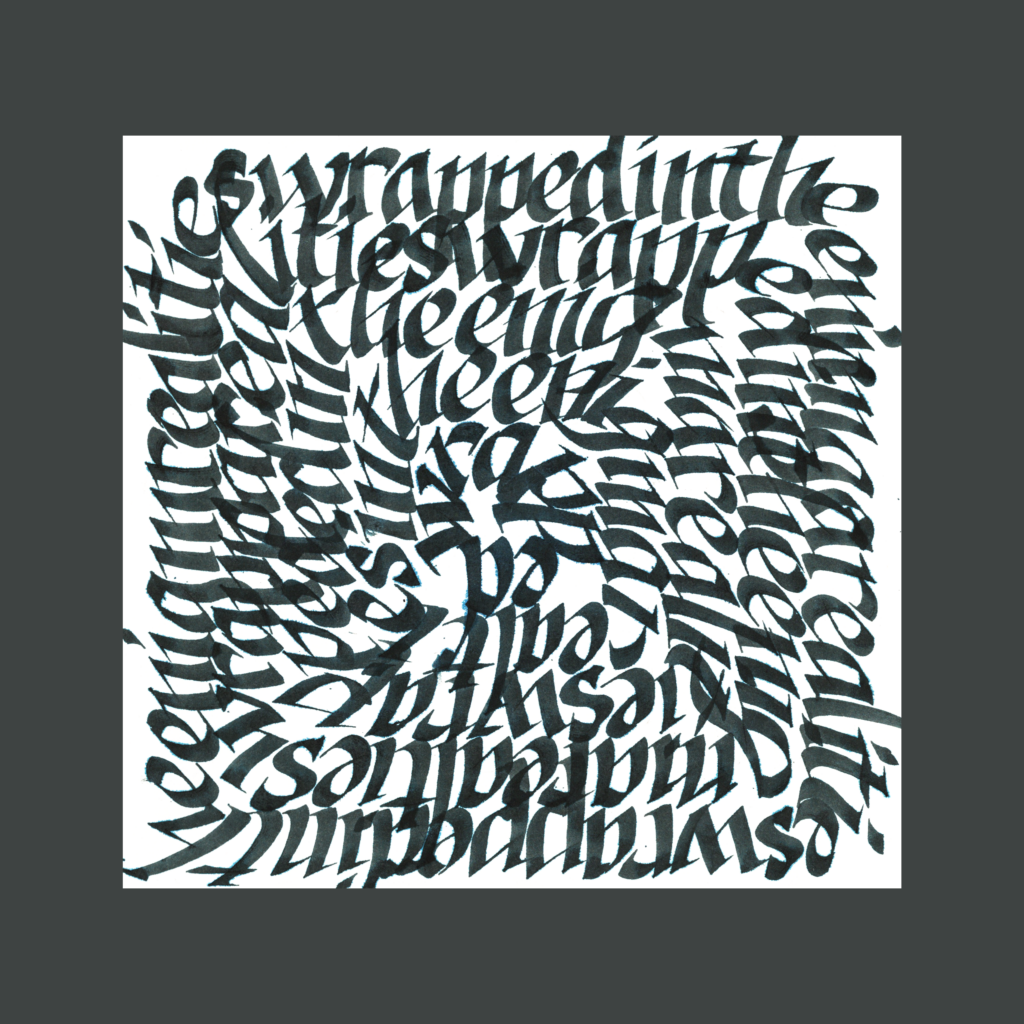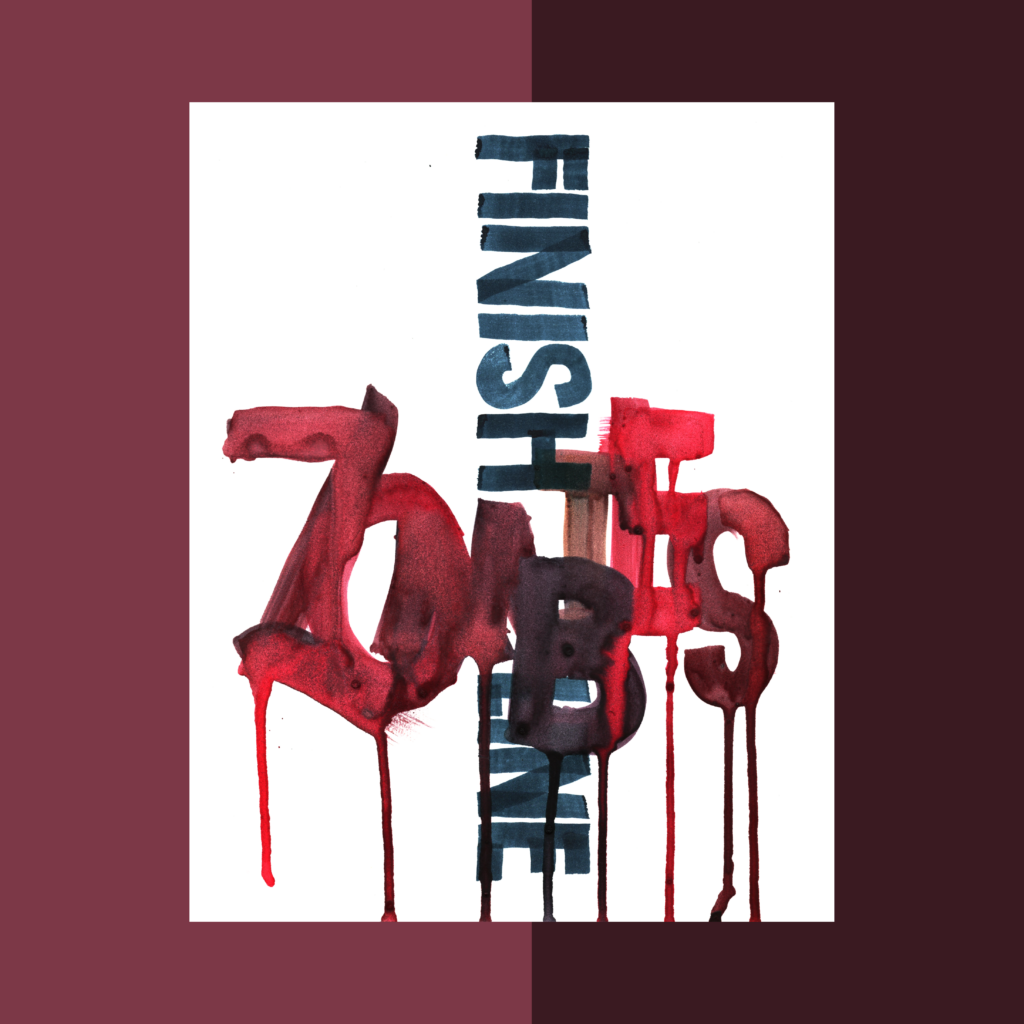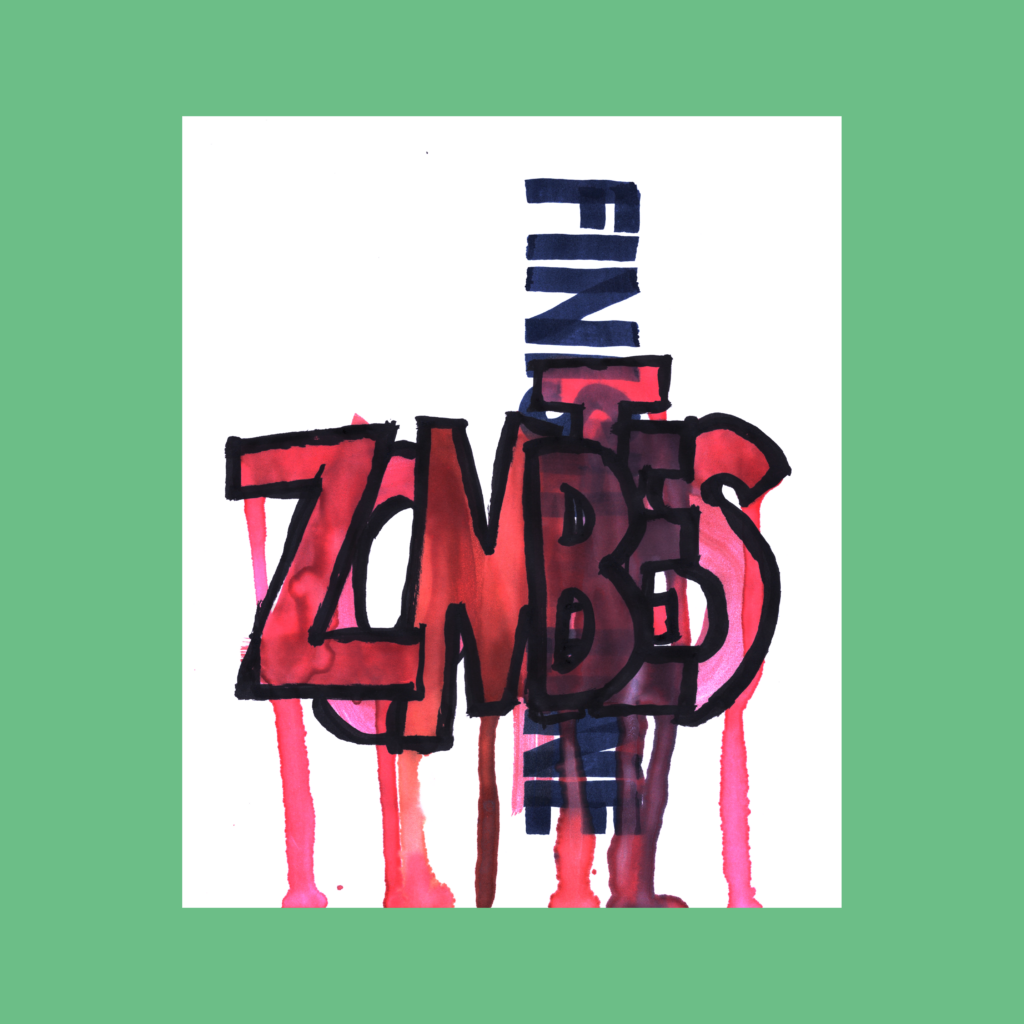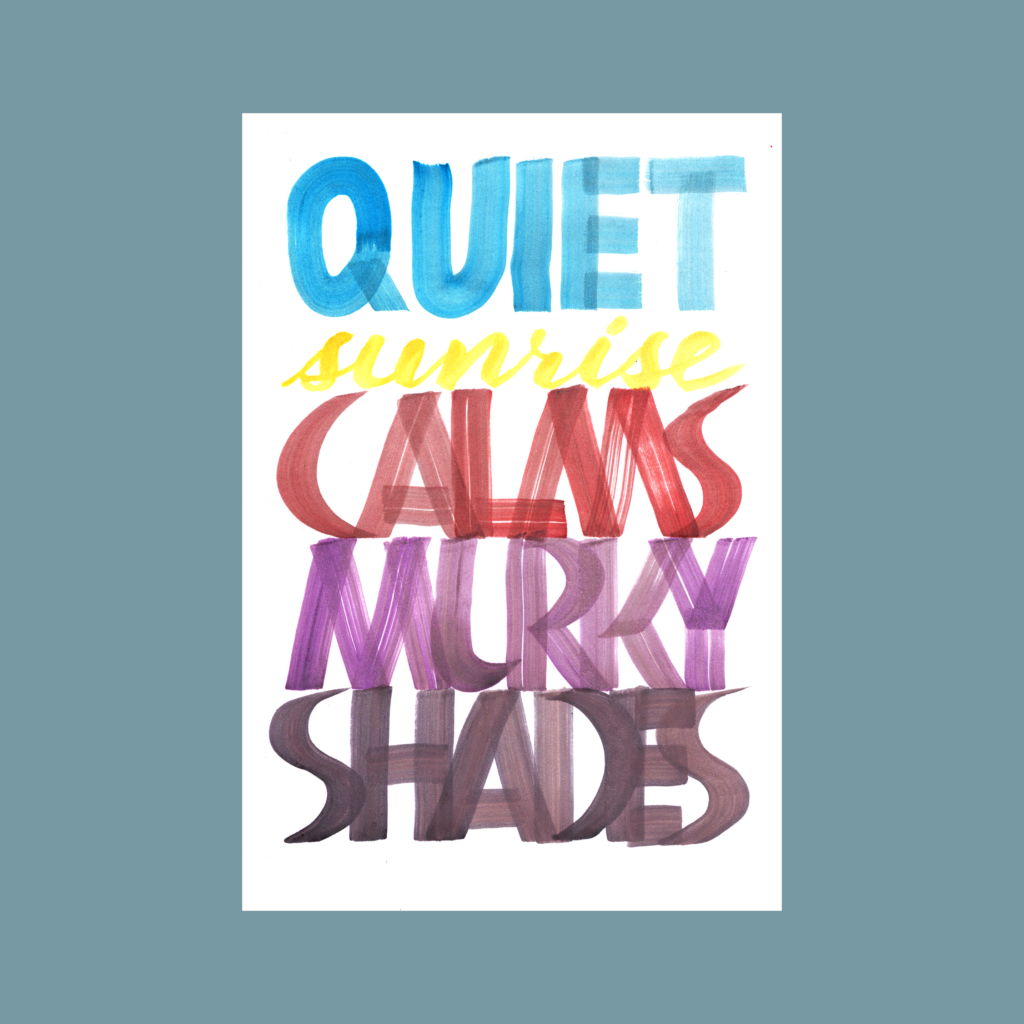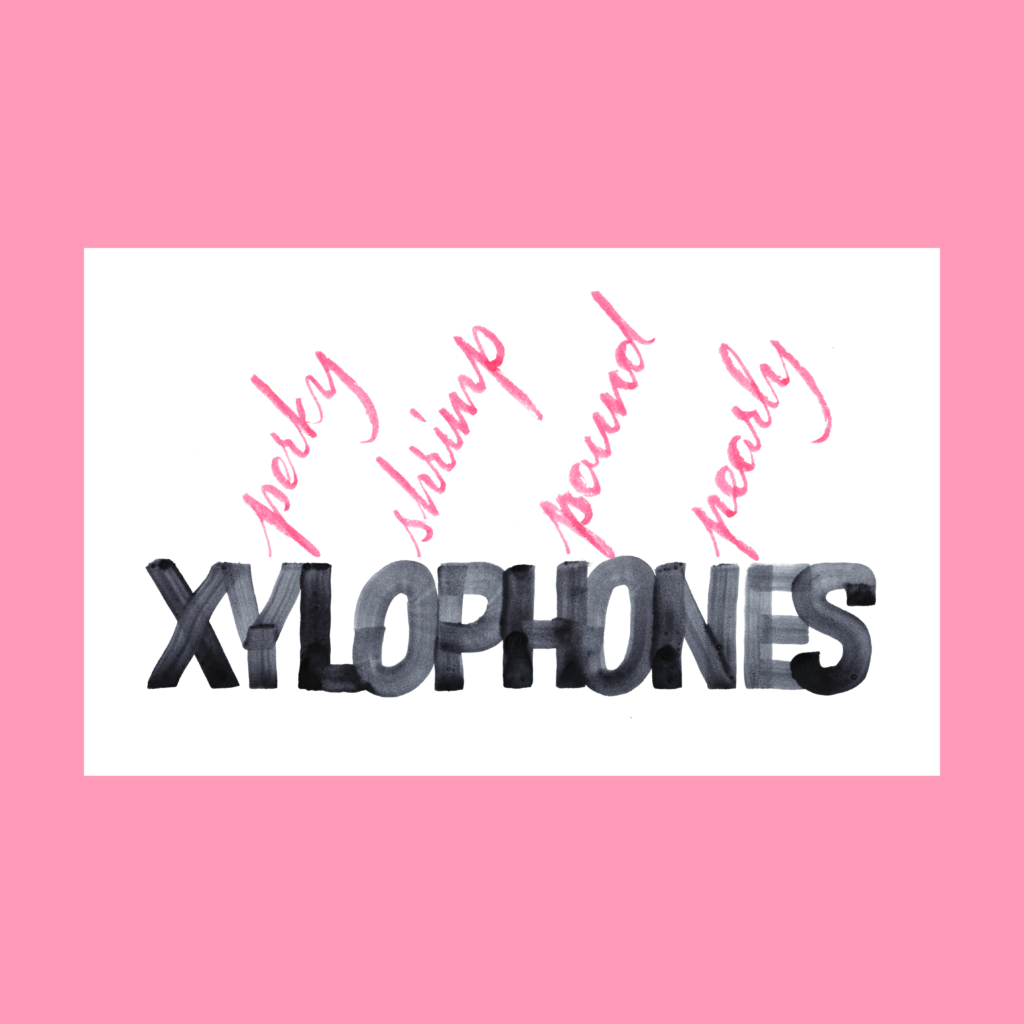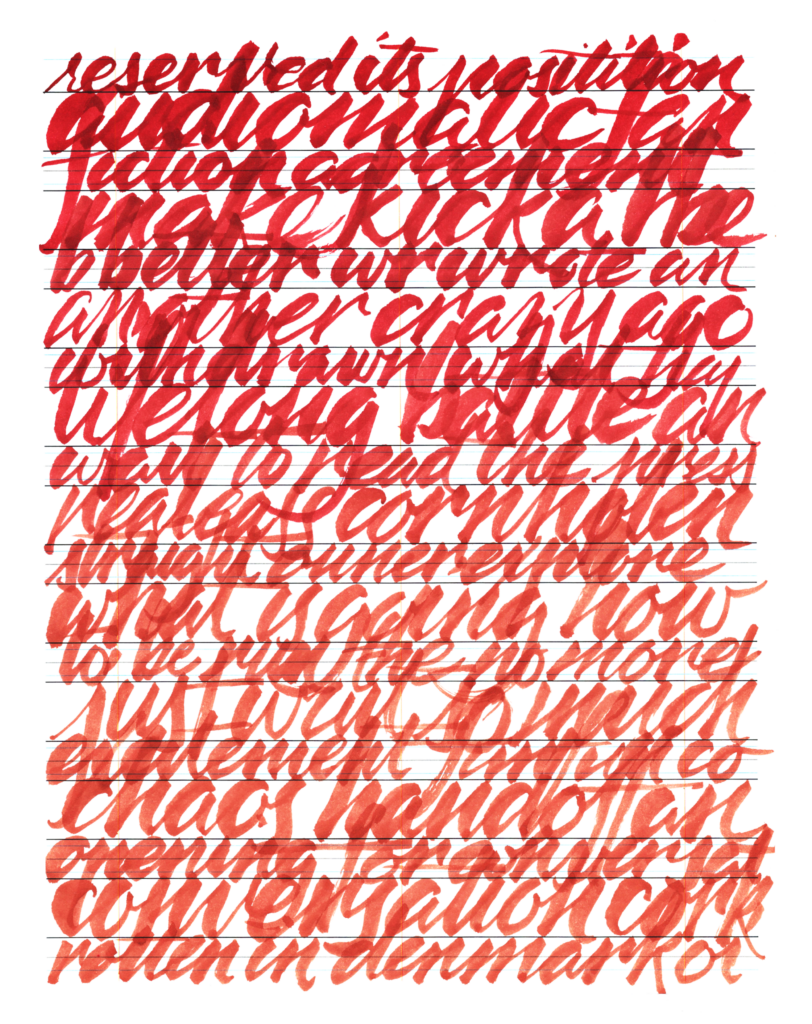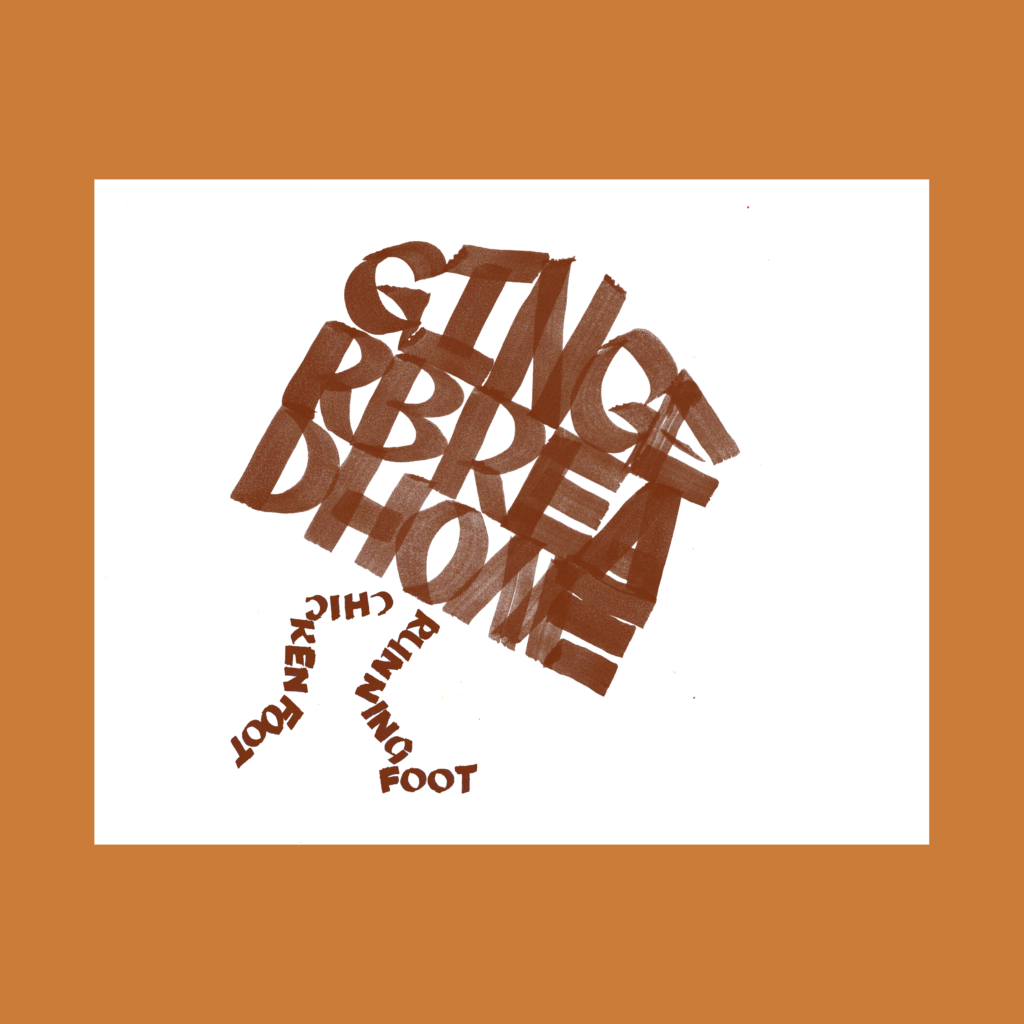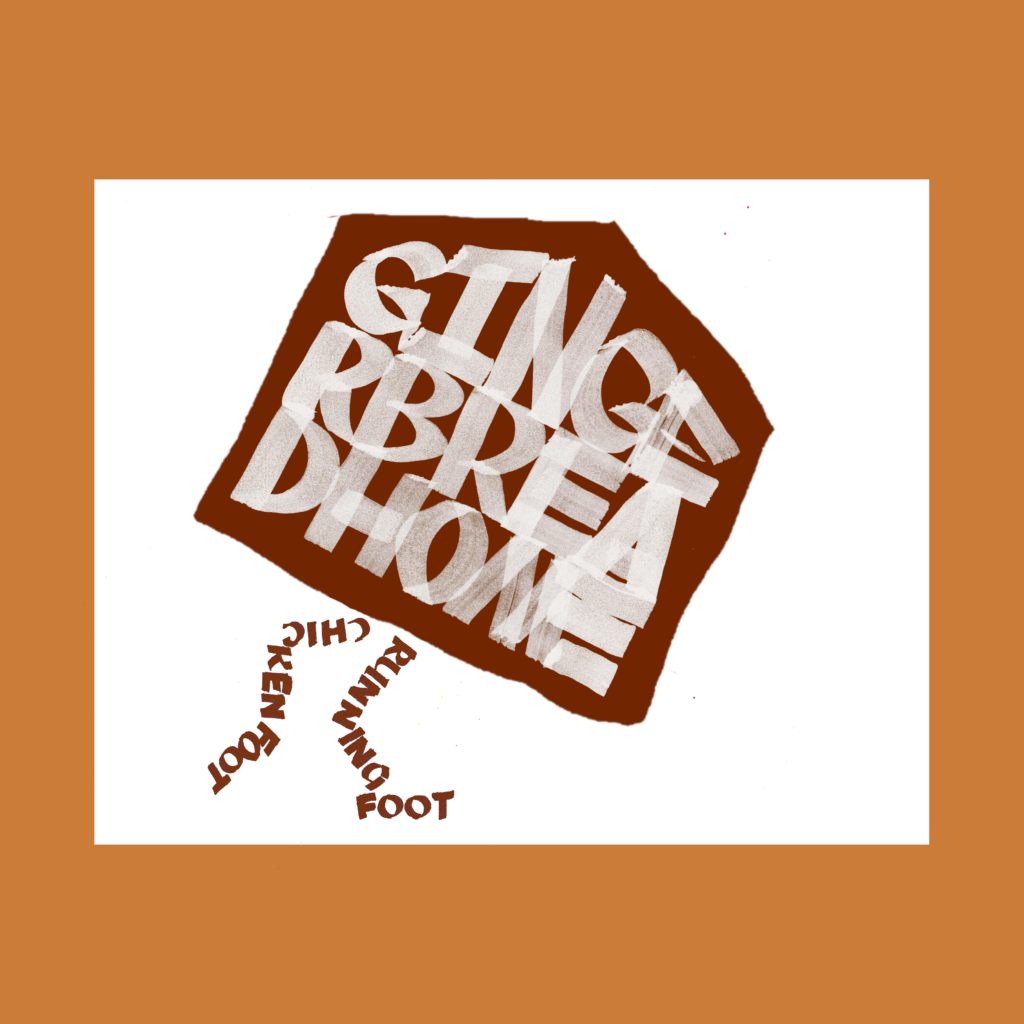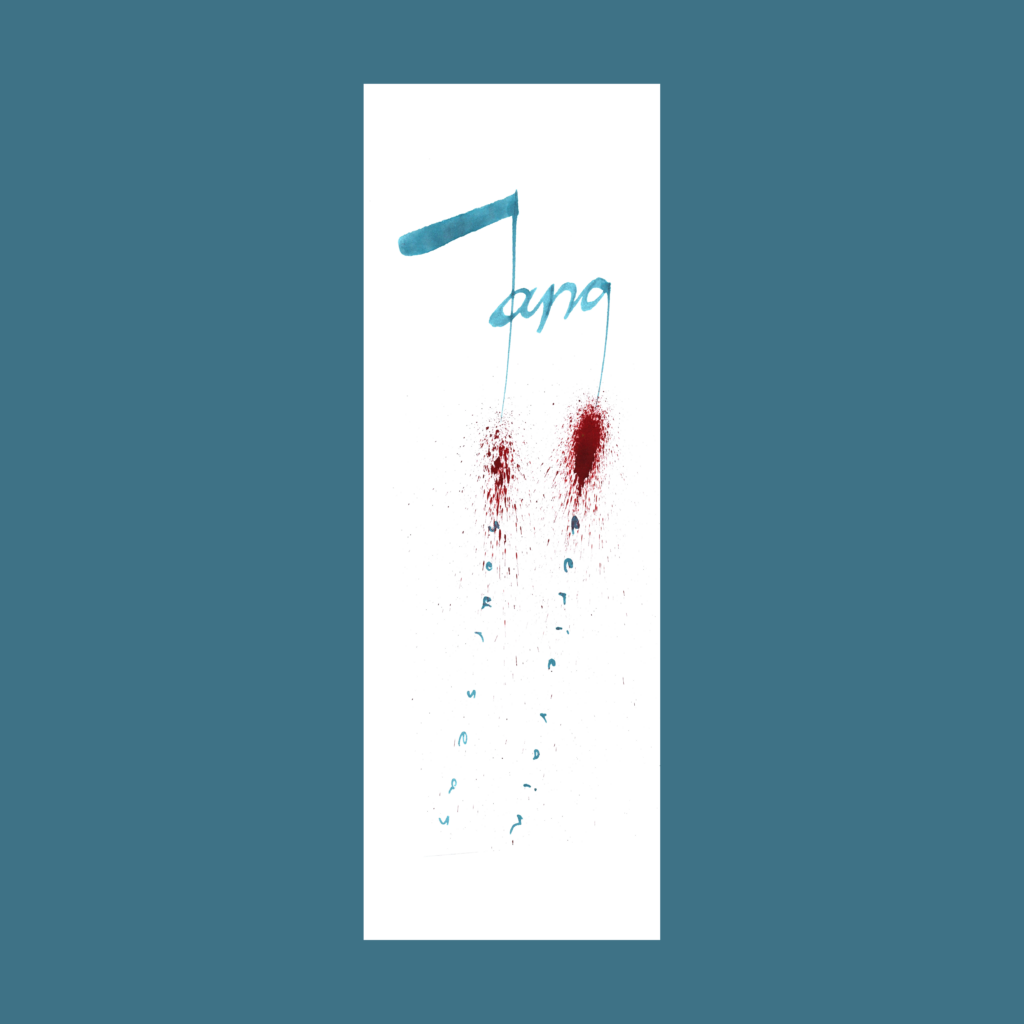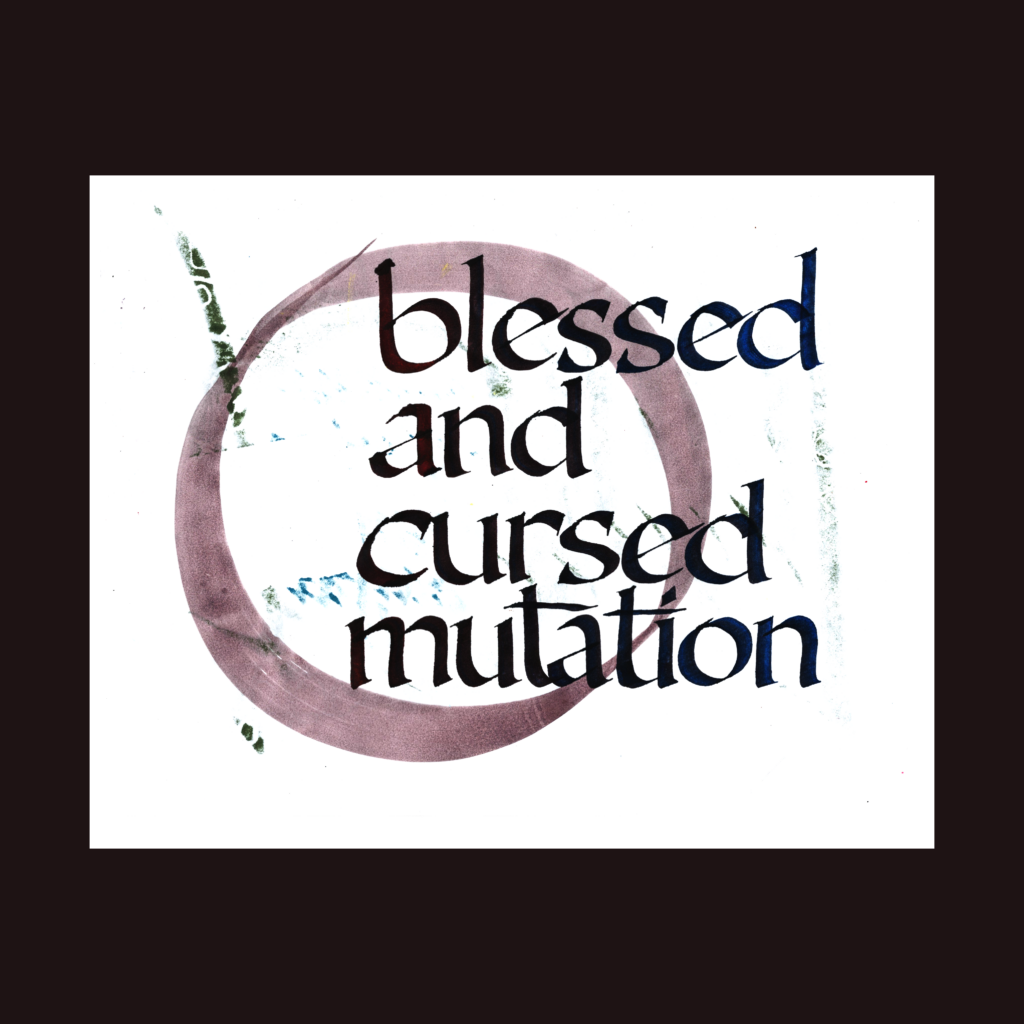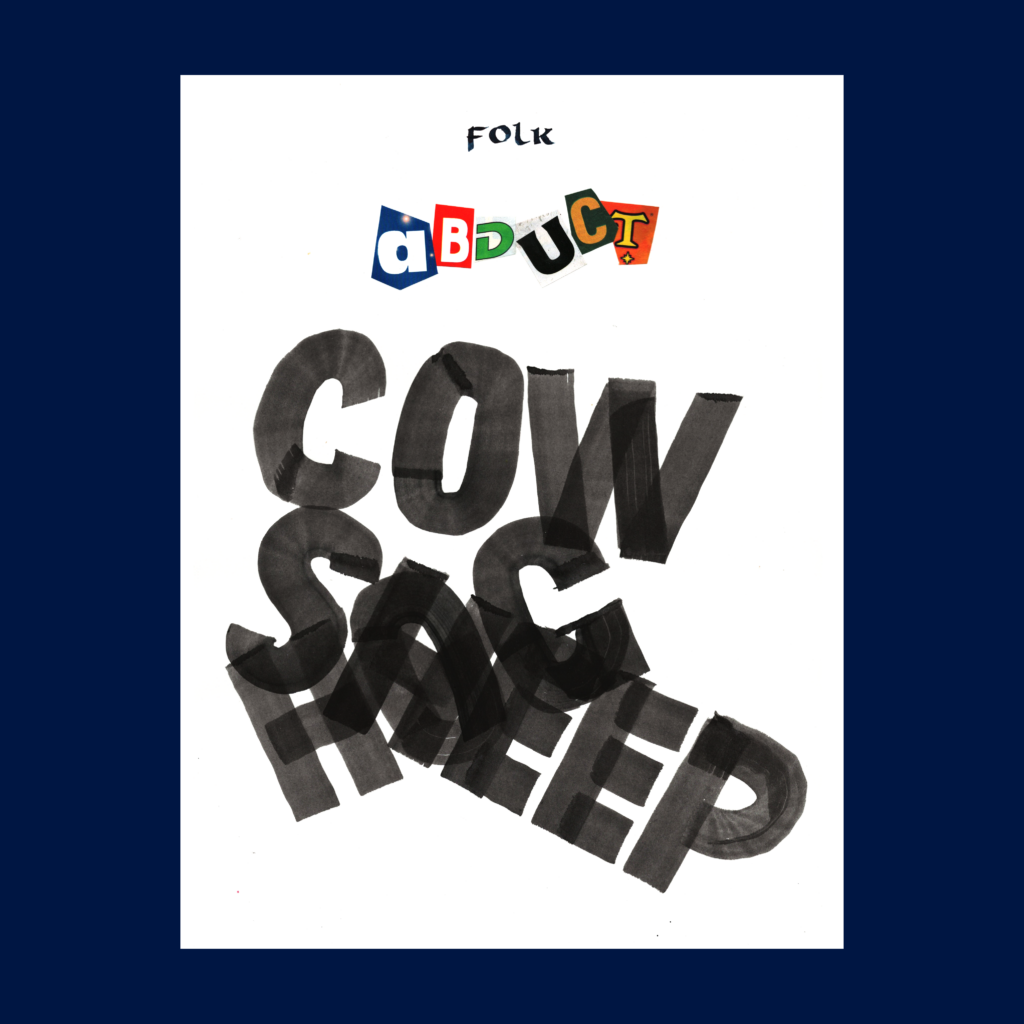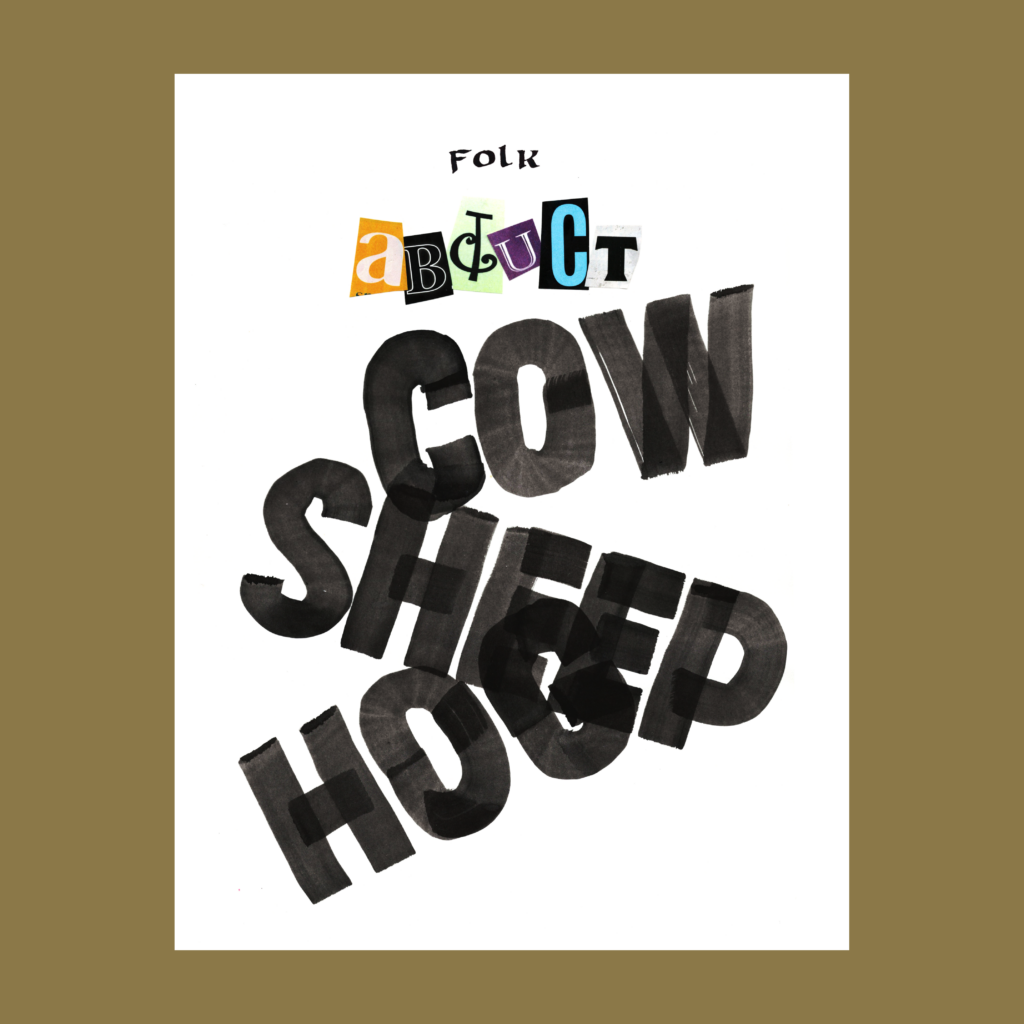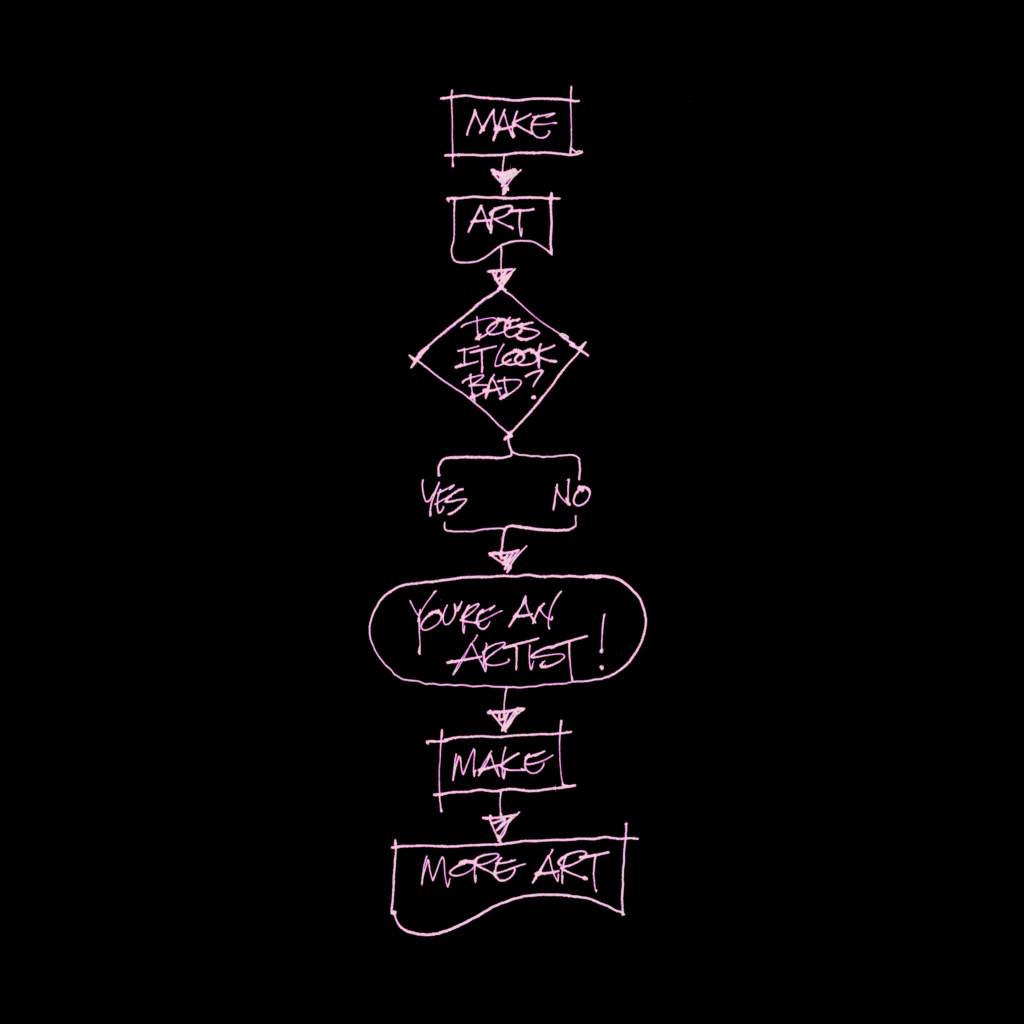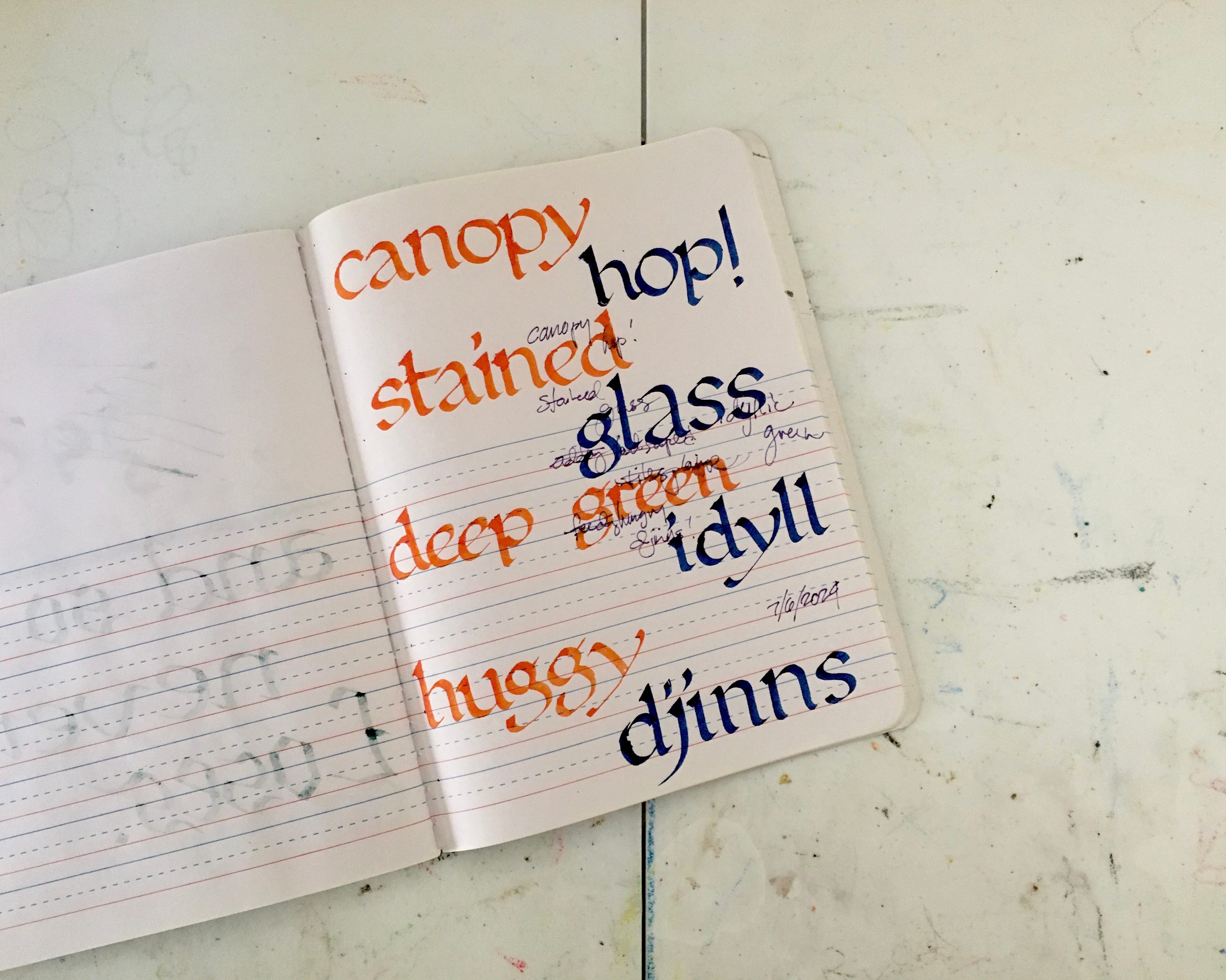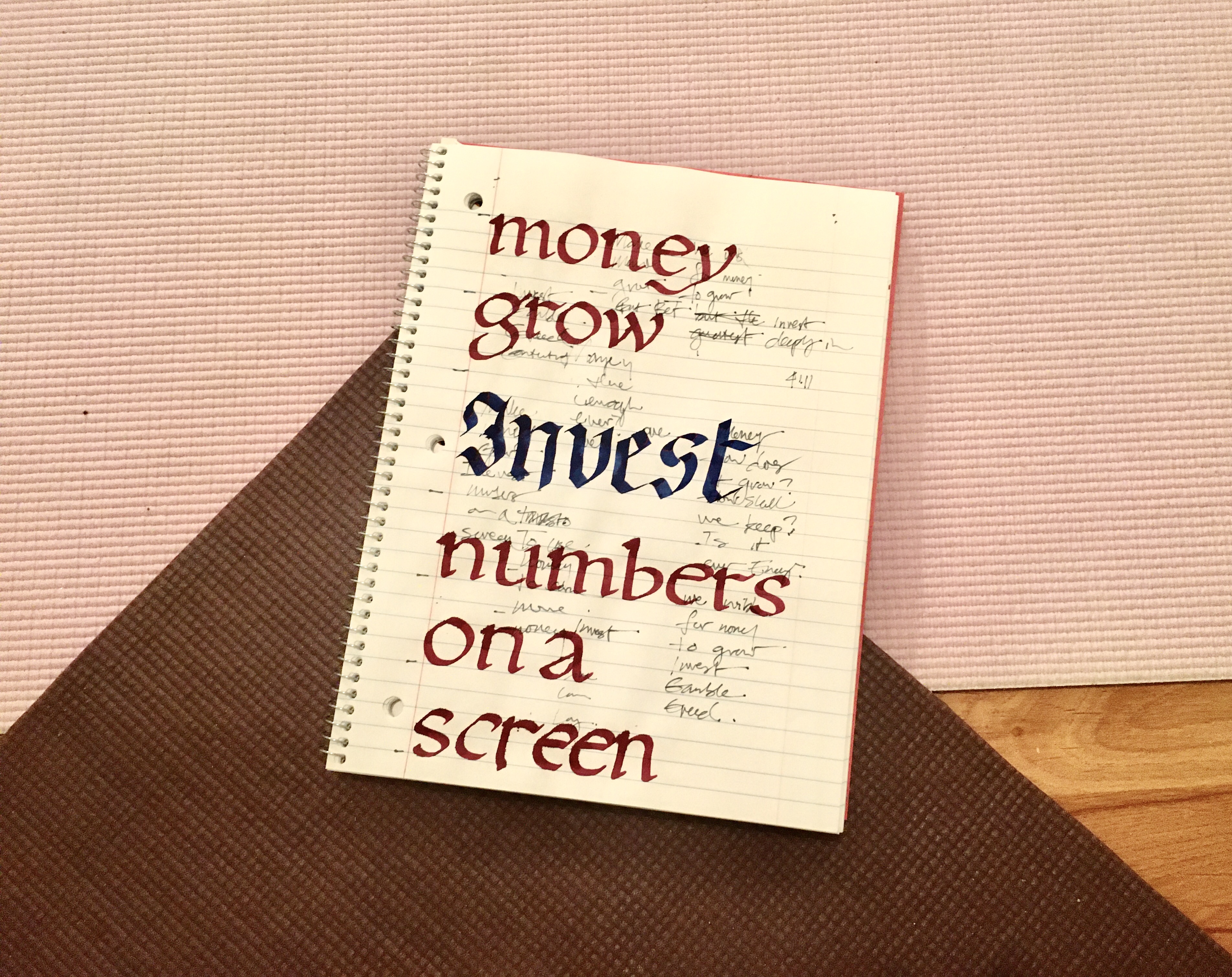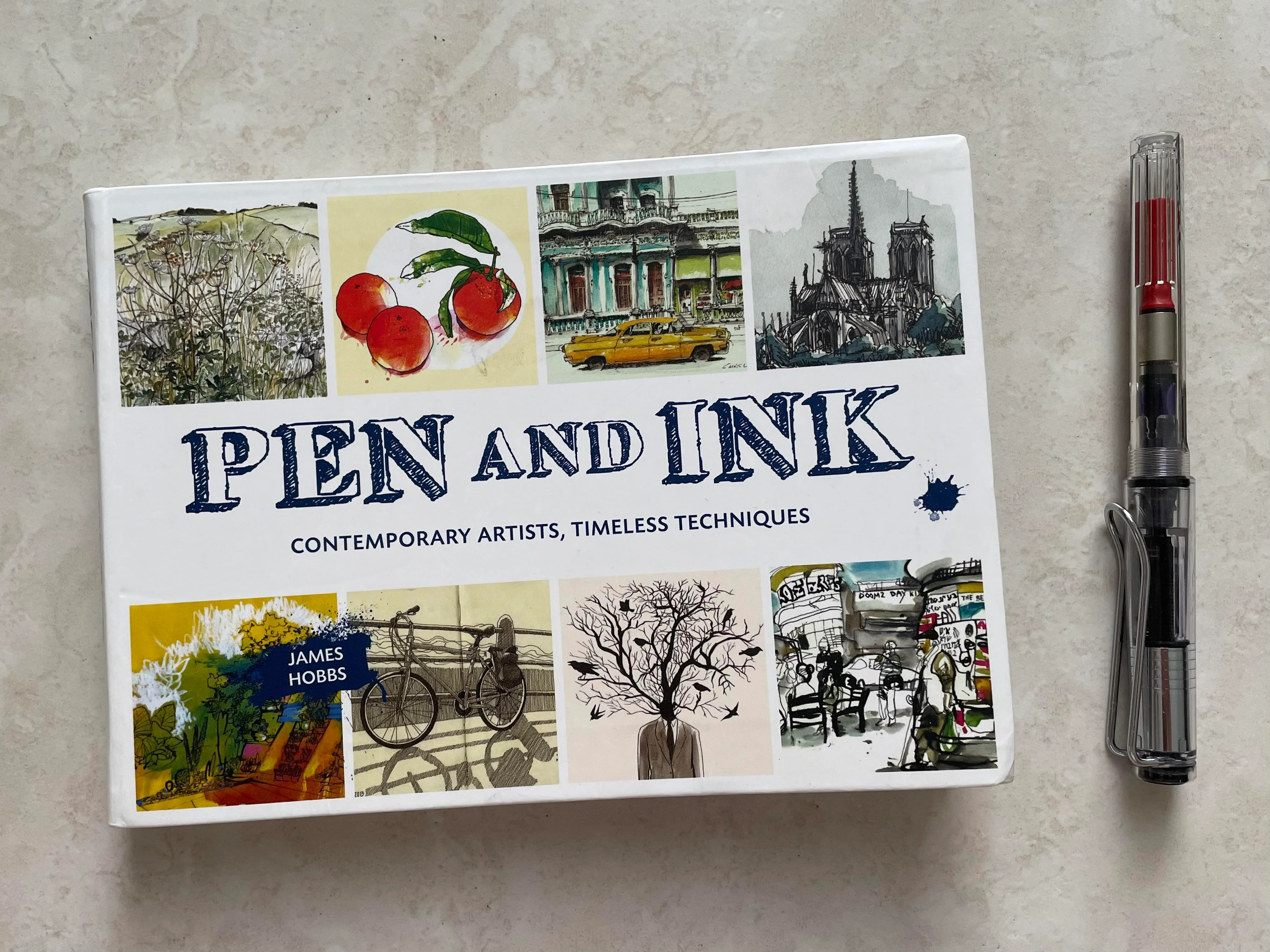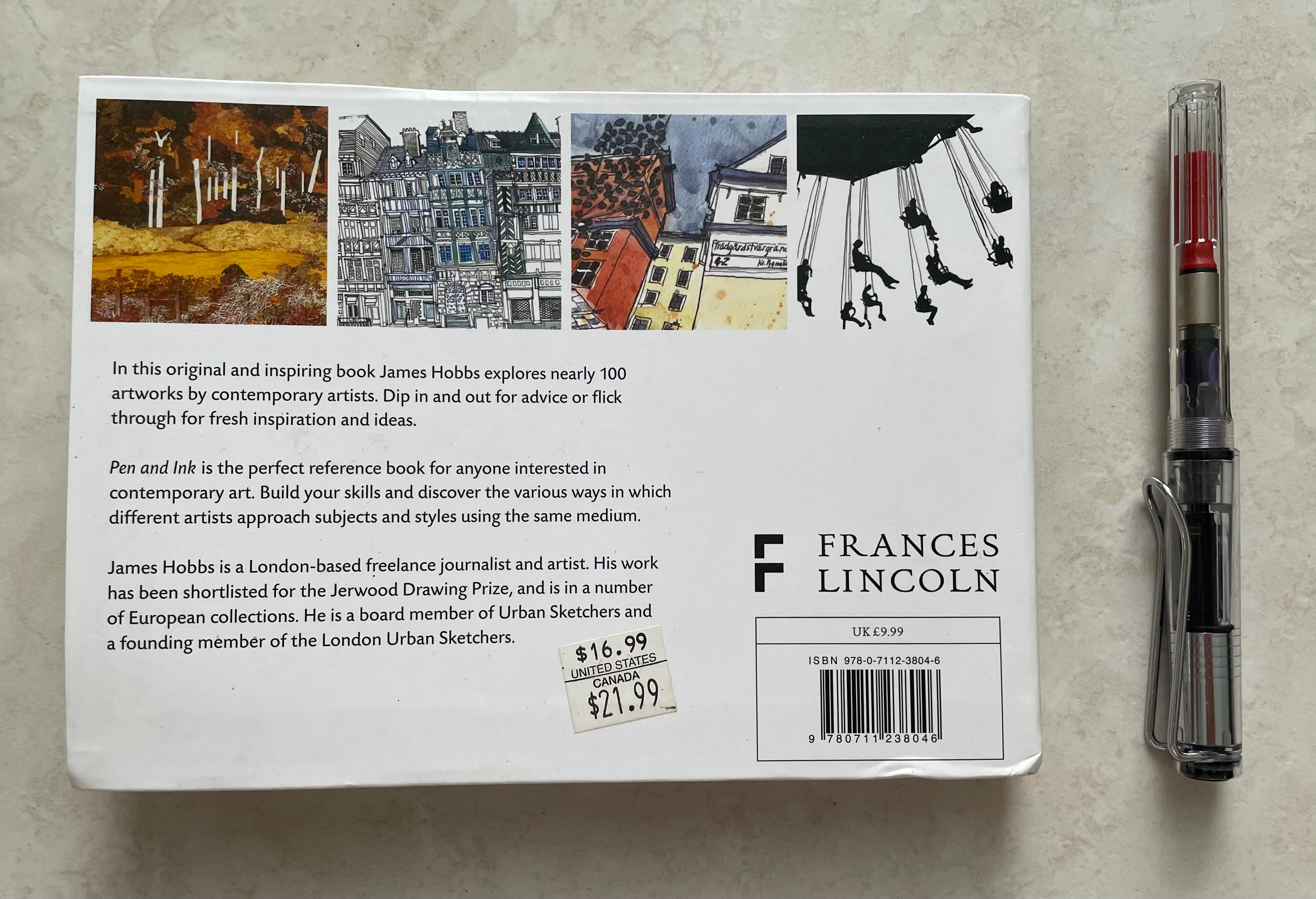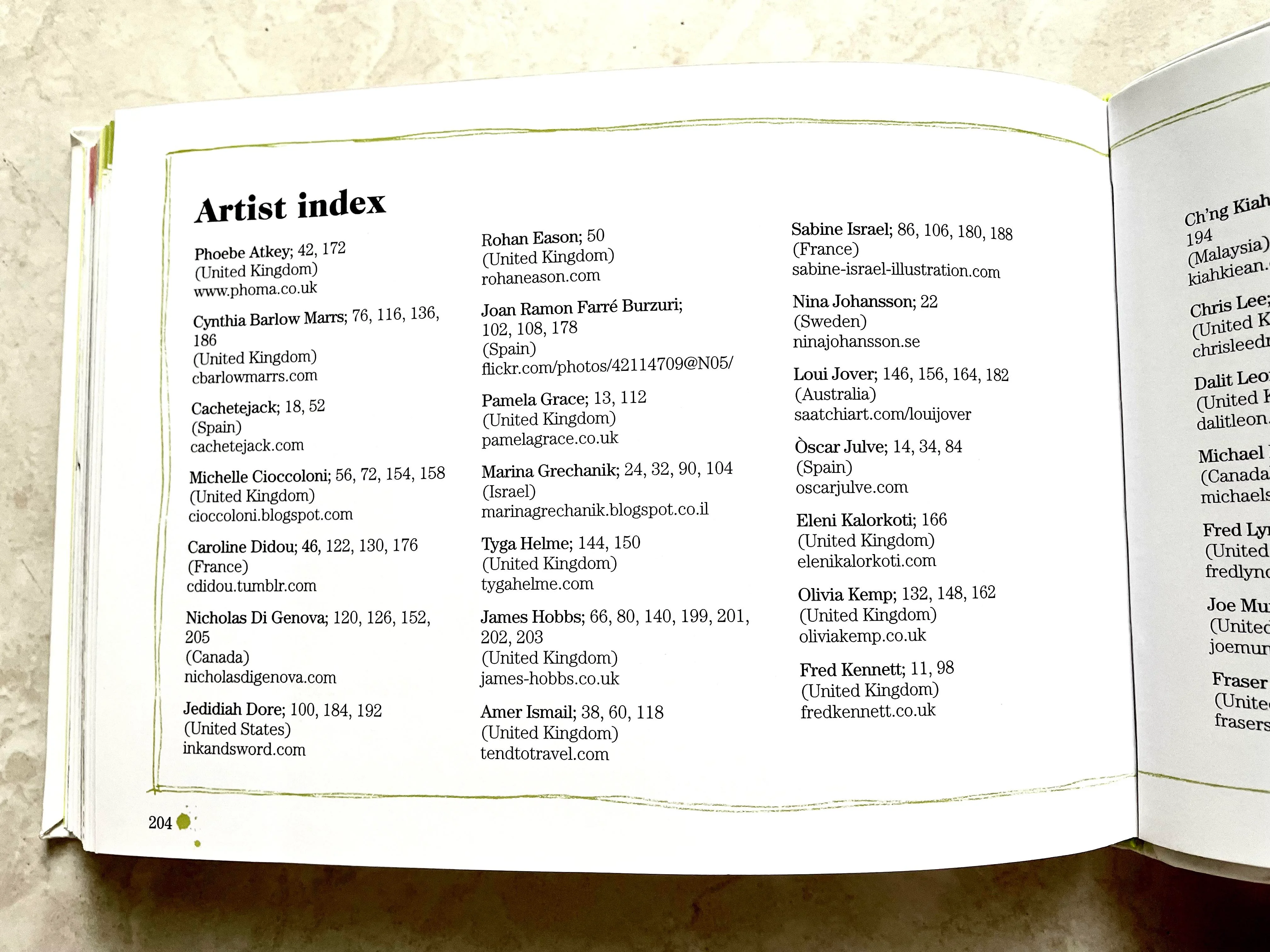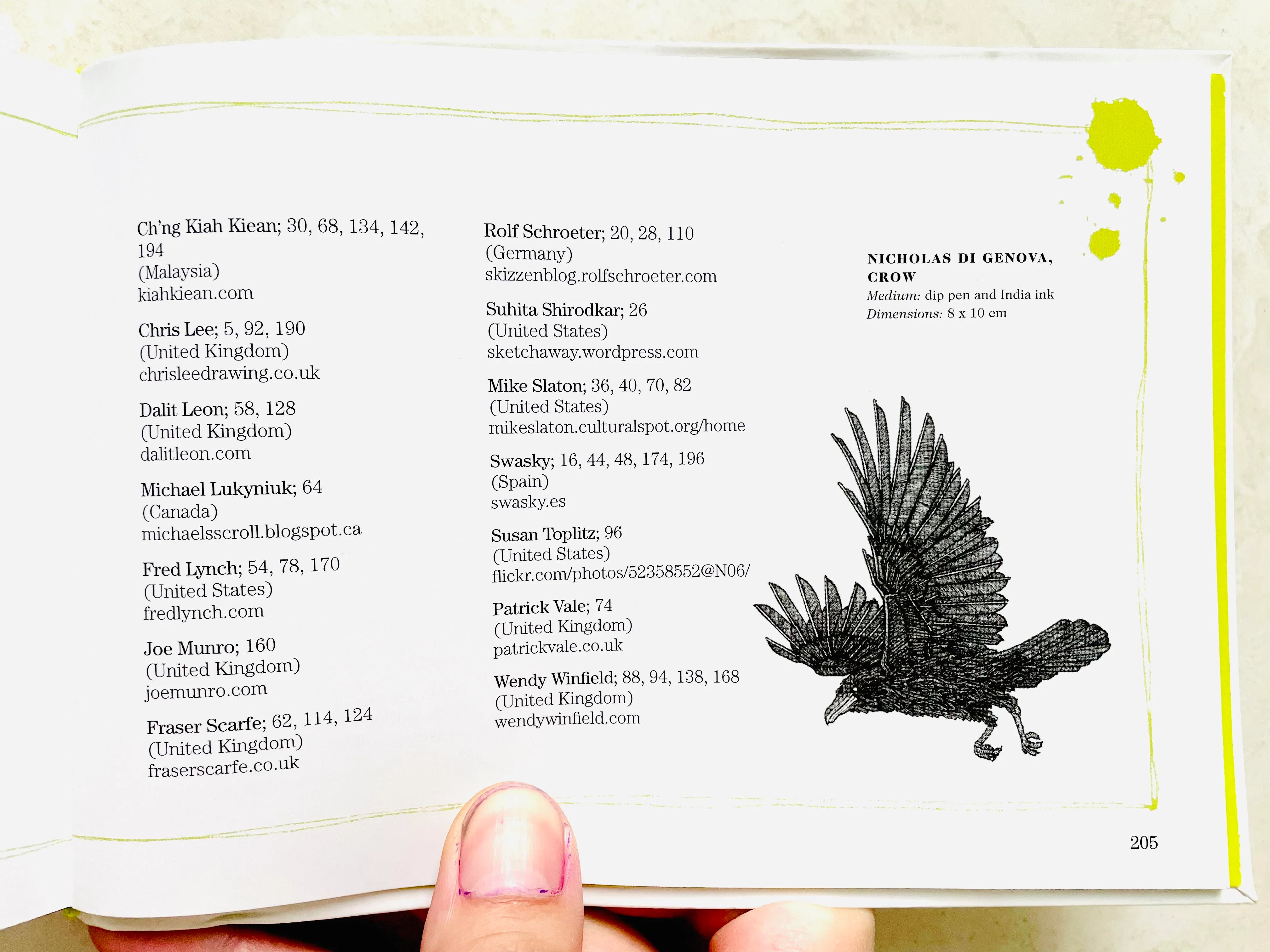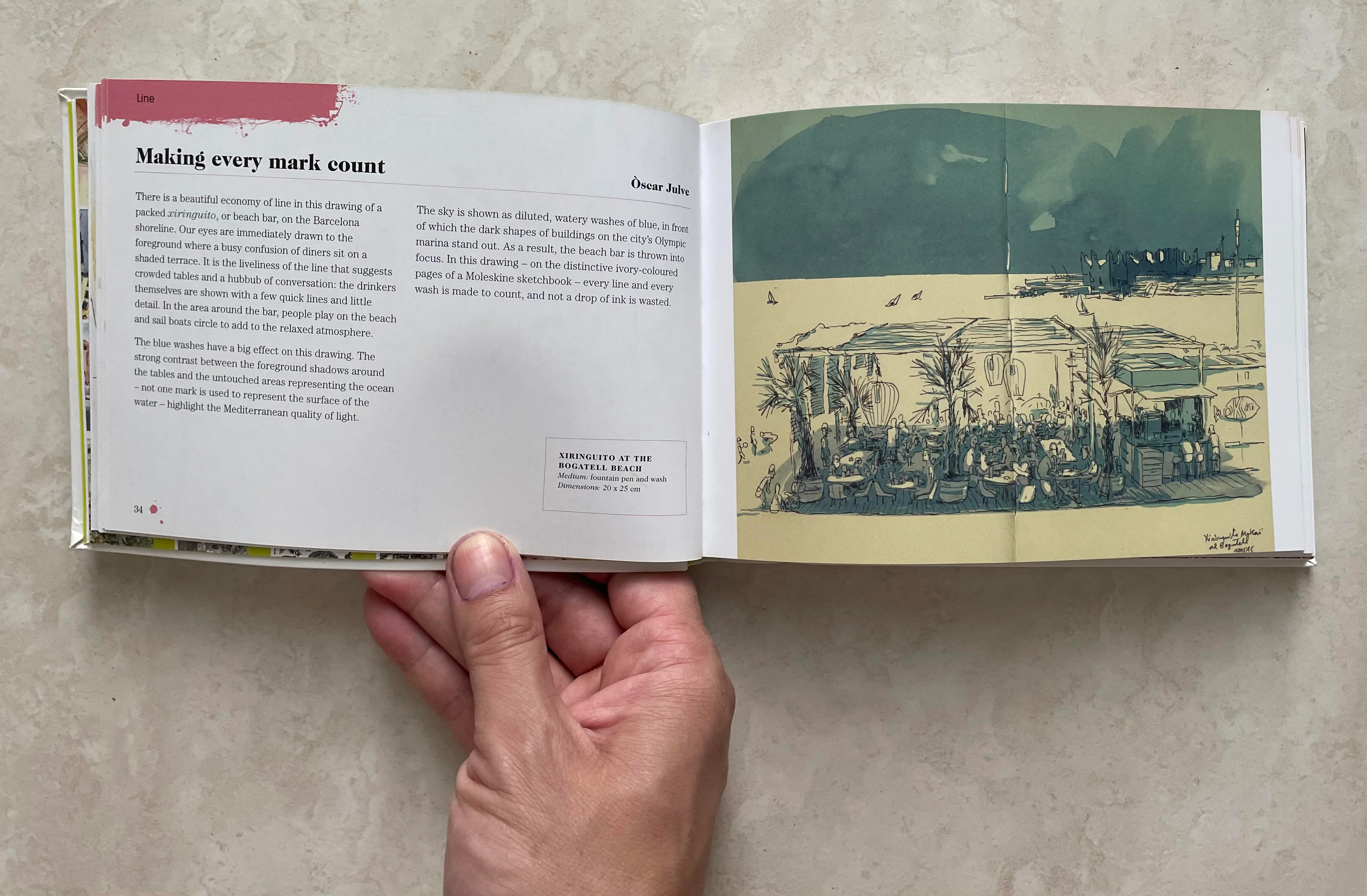I’m procrastinating on taxes by compiling this post. Taxes are a cost of society and a lovely spring buzzkill. On the bright side, we’re about to head out to an airshow at Nellis, so I’m getting our fair share of entertainment (and propaganda) for these taxes.
,
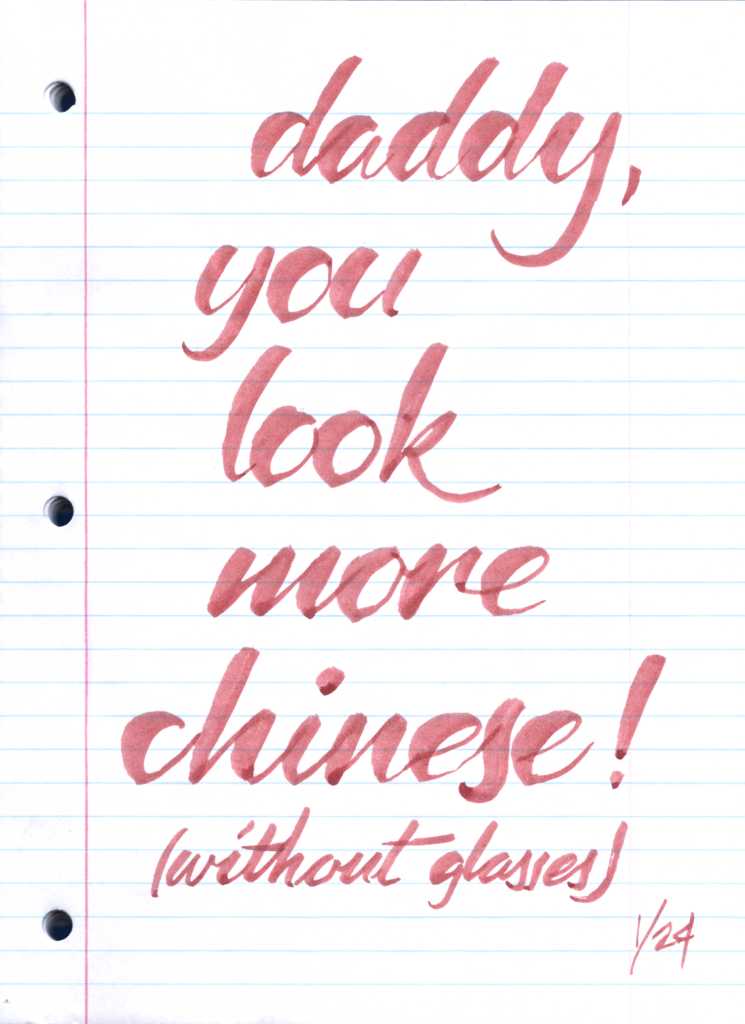
daddy, you look more chinese!
(without glasses)
The boy is still earnestly drops lines of joy. I wonder how much longer it will last; it’s all so fleeting.
,
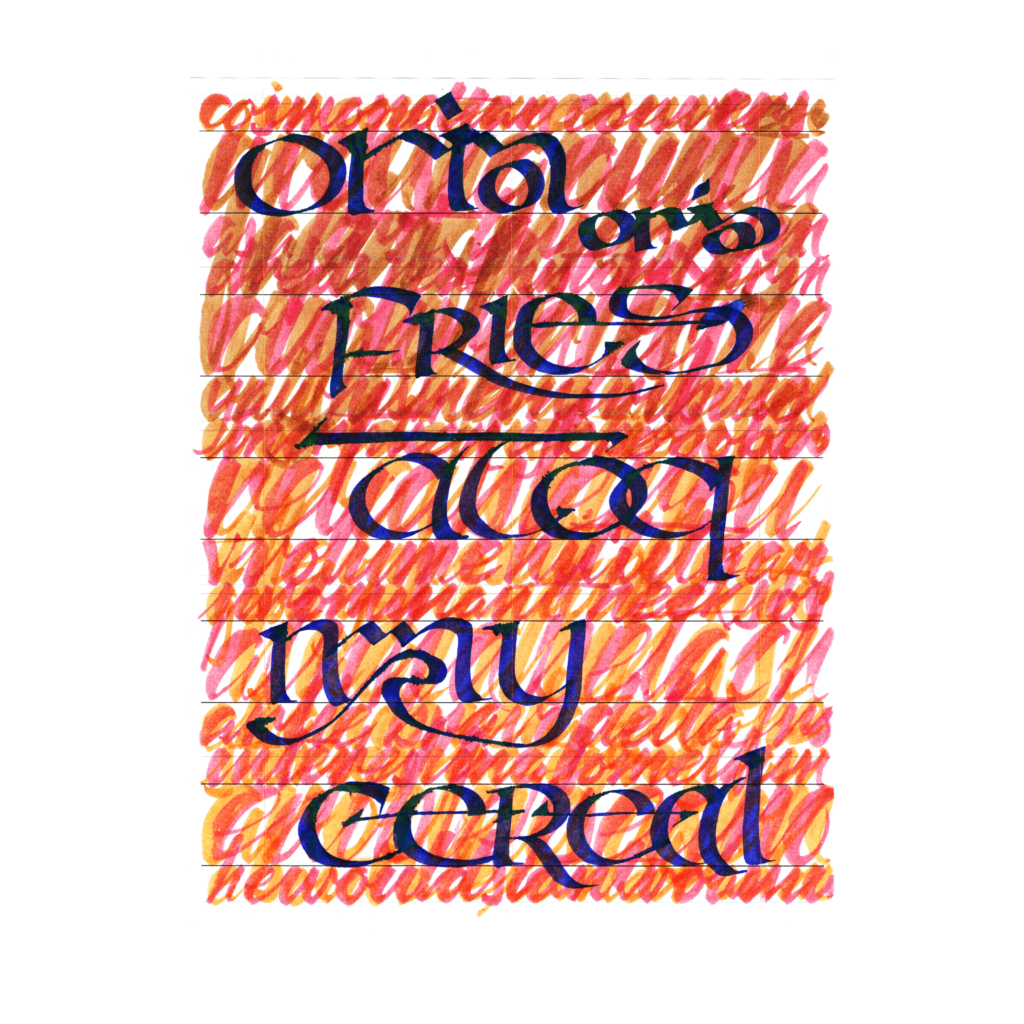
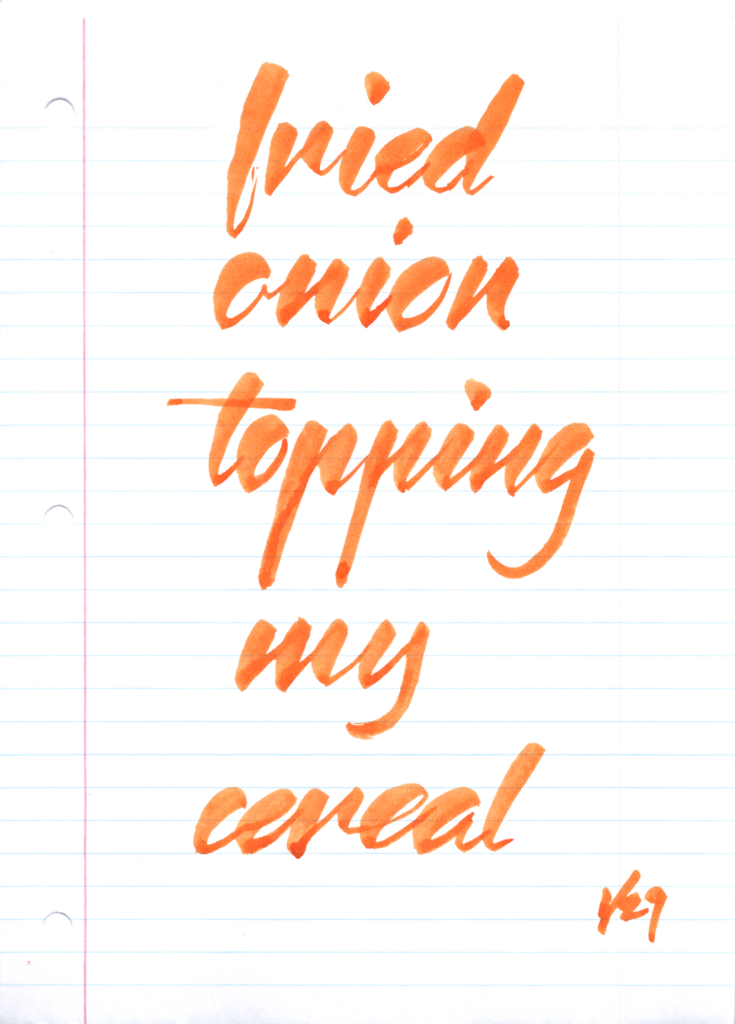
fried
onion
topping
my
cereal
I do love fried onions.
For a week in January, I played with funky Uncials, and it’s on the list to revisit for a full month. I wonder if I will ever stumble into a particular script that “is it“. Likely not—I’m a too into variety and impatient for perfection.
,
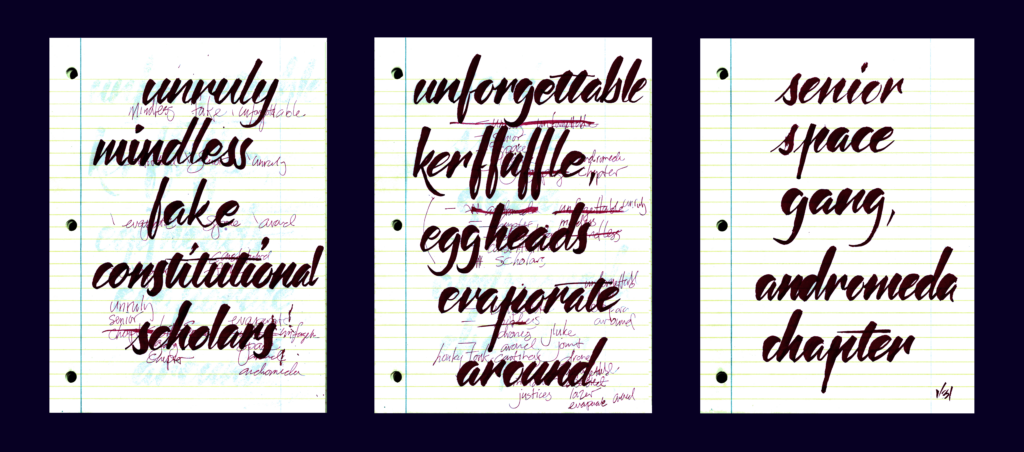
unruly mindless fake constitutional scholars
unforgettable kerfuffle eggheads evaporate around
senior space gang, andromeda chapter
These poetry hauls can be challenging! But it’s always fun to make them work. I love the mental picture of an alien biker gang who faux-studied our founding fathers.
,
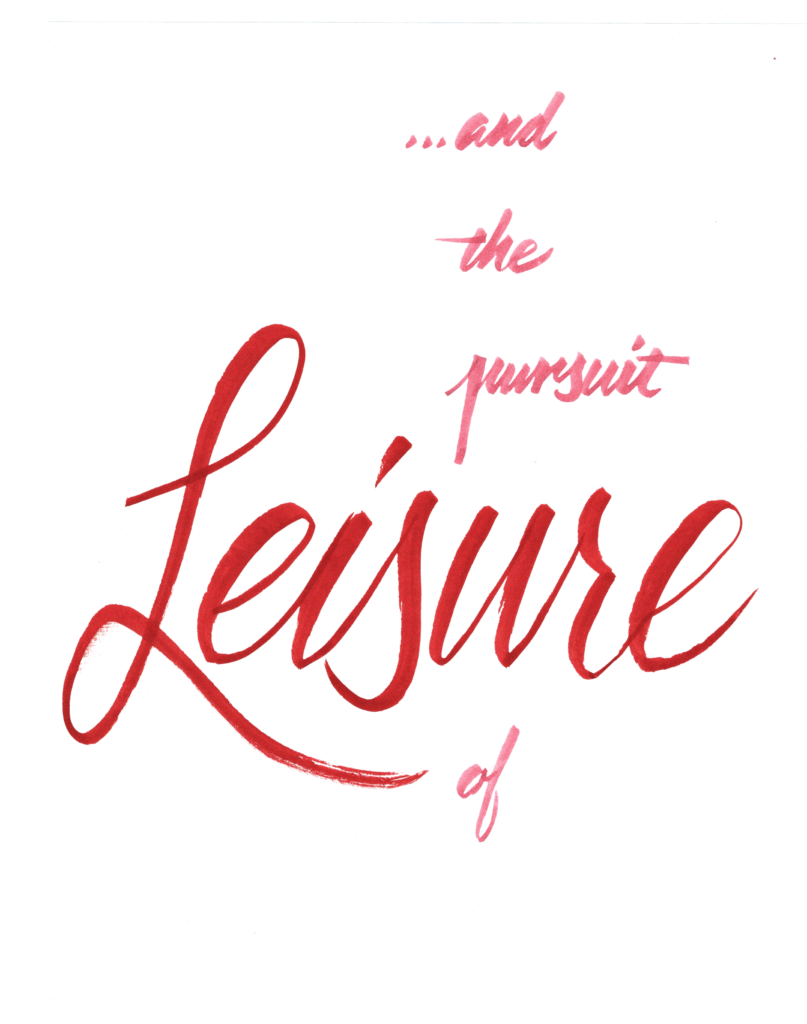
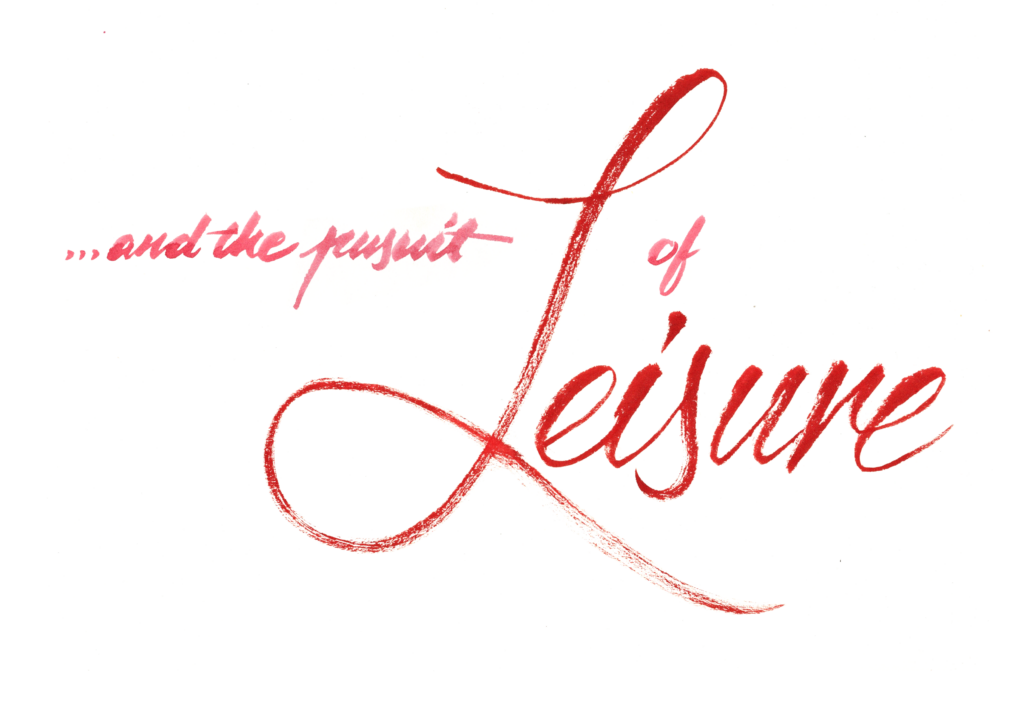
… and the pursuit of Leisure
This was inspired when Thomas J Bevan announced a Symposium on Leisure. I’m super happy with both of these. A couple months later, I’m not confident if I could do this today. The downside of picking up new scripts is losing old ones along the way.
,
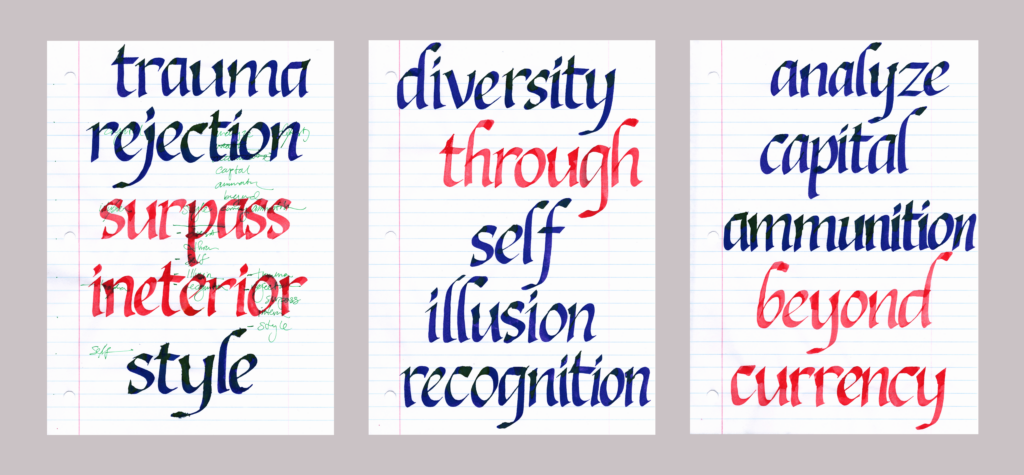

trauma rejection surpass interior style
diversity through self illusion recognition
analyze capital ammunition beyond currency
I made a mistake on “interior” so I rewrote the poem on a single page—which I immediately recognized was the right format for these poetry haul exercises. Sometimes you gotta keep doing something until the right format arrives. Repetition is the heart of process.
,
Between commenting on two-month old 5WP’s and editing four-year old blog drafts, these newsletters have become an exercise in archeology.
I do appreciate each of y’all who read and comment on them. Thanks for joining my delve into the past!
Cya next time!
,
PS—Word by Word, Ann Lamott, 1996
Bird by Bird is such a classic that the library has a long wait for the audiobook. So I started with this recorded seminar that she gave in Austin.
I dig it—I’ll be reading Bird by Bird.
Three key takeaways.
- If you’re gonna be a writer, then write. Getting published is only a result of writing.
- Find a writing group to work through this all together.
- Draw deeply from reality.
I appreciate her suggestion for writer’s block. Give yourself permission to think. If you can’t write, then maybe force yourself to not write for a while. Sometimes your brain needs space to recharge.
,
Here are a few other exercises that sounded fun (though I haven’t tried them in the four years since I listened to that workshop).
- List 10 favorite words.
- Spend 300 words on someone you truly hate.
- Describe yourself in detail five and ten years from now.
- Where you would want to live, do it in exquisite detail.
- Why you are here, why do you insist?
,
PPS—Bird by Bird, Anne Lamott, 1995
Vulnerable, crass, funny. Brilliant! I see why it’s a classic writing workshop in a book. Anne explores the difficulty of the process, and exhorts the reader to do the work.
She doesn’t shy from the benefits of the writing life, but reminds us that outside success isn’t all that special. Our personal problems don’t disappear after our shell gets polished.
So, it’s about sitting down and writing. Work and make it happen. Taking things one “small assignment” at a time. Finding a cohort to work with.
Don’t be disappointed when a project always ends with a whimper. (They all do.) Life keeps moving. The process stays going.
TLDR: Sit down every day, jump in, flail around, do a bit at a time, gut yourself to examine the innards, deliver, and do it again tomorrow. It’ll add up to a good life.
,
Speaking of Process, a friend and I started a journal of student work at Berkeley that lasted for two issues. It darn near killed me both years. For the longest time I thought it was a waste (aside from meeting one of my best friends). As a middle-aged man, I’ve learned that friends are rare. A buddy is one helluva a haul for a project.
,
This book is nominally about writing, but her subtitle is perfect: “Some Instructions on Writing and Life”. Her notes on completing a book mirror too closely to the work I’ve done as an architect. Writing might be her profession, but this book transcends her medium.
,
It is refreshing to read a self-help book by a great writer. The book shines; you don’t have to trust claims of her excellence in some other field—the proof is right here, page by page. Her display of craft makes her advice all the more visceral as she bares her soul and wrestles with the difficulty of life.
.
PPPS—Happy Year of the Snake!
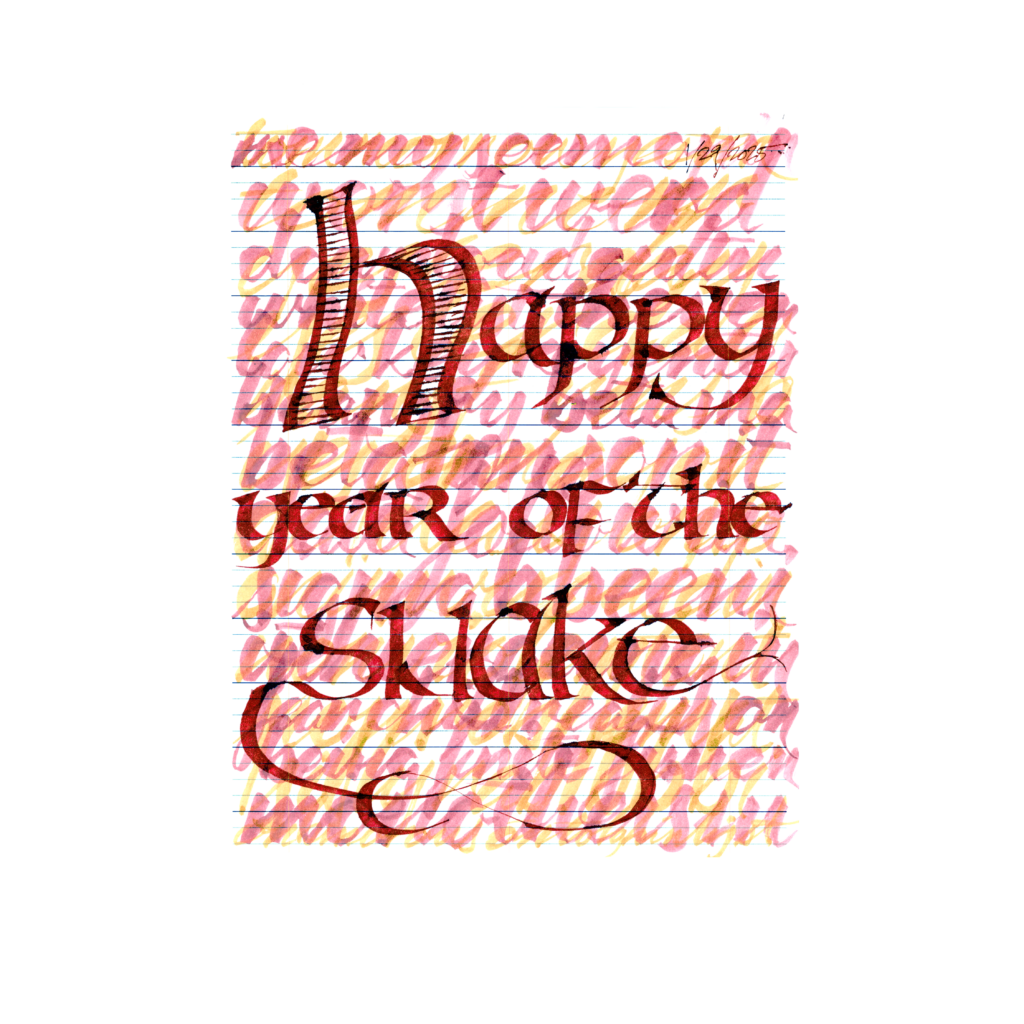
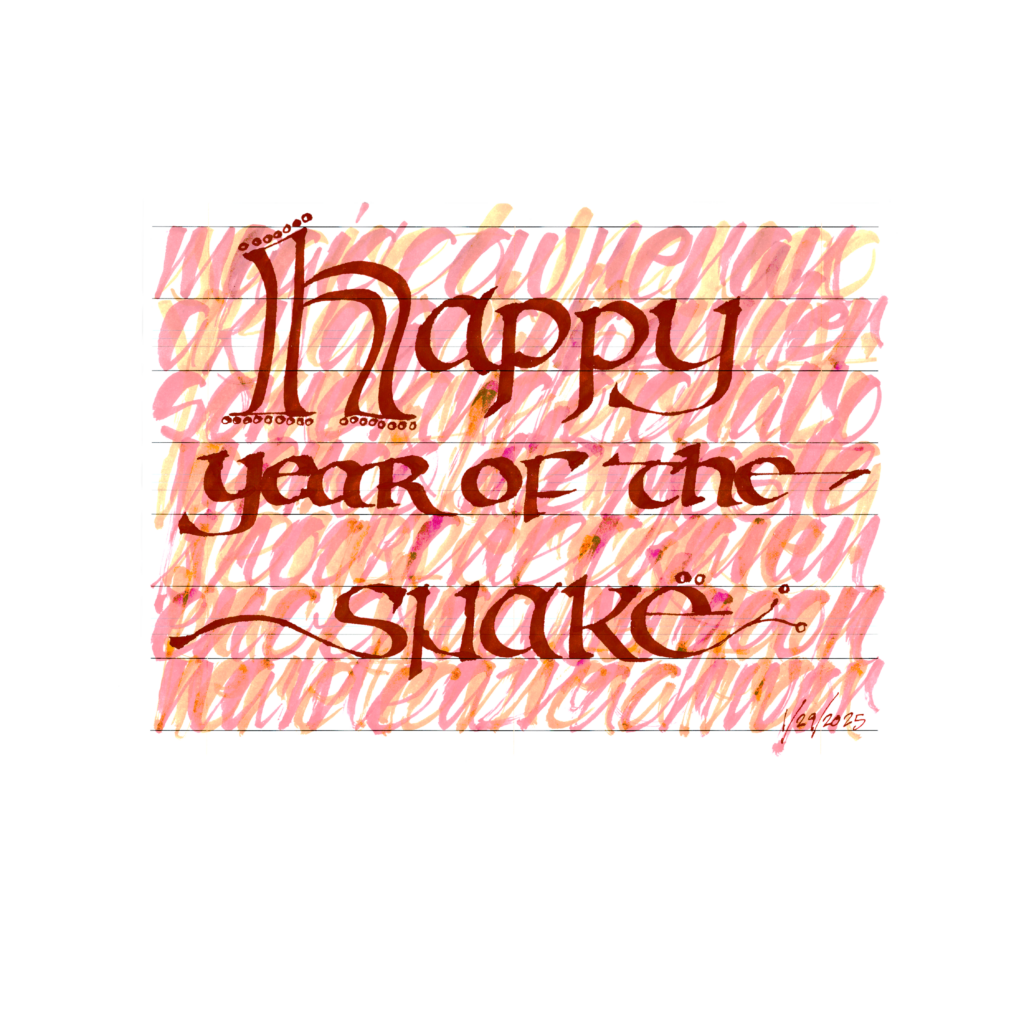
.
